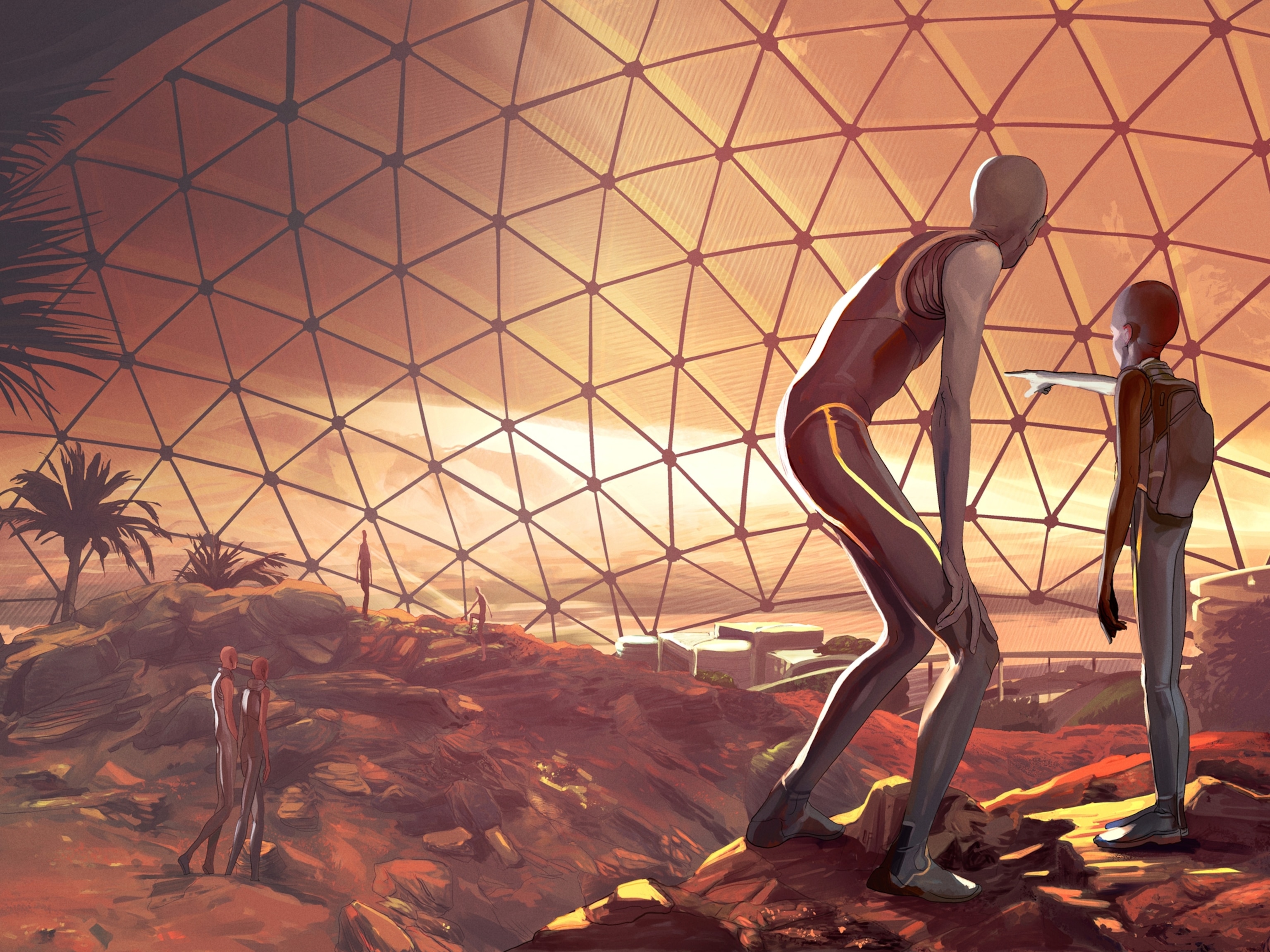

The future of spaceflight—from orbital vacations to humans on Mars
NASA aims to travel to the moon again—and beyond. Here’s a look at the 21st-century race to send humans into space.
Welcome to the 21st-century space race, one that could potentially lead to 10-minute space vacations, orbiting space hotels , and humans on Mars. Now, instead of warring superpowers battling for dominance in orbit, private companies are competing to make space travel easier and more affordable. This year, SpaceX achieved a major milestone— launching humans to the International Space Station (ISS) from the United States —but additional goalposts are on the star-studded horizon.
Private spaceflight
Private spaceflight is not a new concept . In the United States, commercial companies played a role in the aerospace industry right from the start: Since the 1960s, NASA has relied on private contractors to build spacecraft for every major human spaceflight program, starting with Project Mercury and continuing until the present.
Today, NASA’s Commercial Crew Program is expanding on the agency’s relationship with private companies. Through it, NASA is relying on SpaceX and Boeing to build spacecraft capable of carrying humans into orbit. Once those vehicles are built, both companies retain ownership and control of the craft, and NASA can send astronauts into space for a fraction of the cost of a seat on Russia’s Soyuz spacecraft.
SpaceX, which established a new paradigm by developing reusable rockets , has been running regular cargo resupply missions to the International Space Station since 2012. And in May 2020, the company’s Crew Dragon spacecraft carried NASA astronauts Doug Hurley and Bob Behnken to the ISS , becoming the first crewed mission to launch from the United States in nearly a decade. The mission, called Demo-2, is scheduled to return to Earth in August. Boeing is currently developing its Starliner spacecraft and hopes to begin carrying astronauts to the ISS in 2021.
Other companies, such as Blue Origin and Virgin Galactic , are specializing in sub-orbital space tourism. Test launch video from inside the cabin of Blue Origin’s New Shepard shows off breathtaking views of our planet and a relatively calm journey for its first passenger, a test dummy cleverly dubbed “Mannequin Skywalker.” Virgin Galactic is running test flights on its sub-orbital spaceplane , which will offer paying customers roughly six minutes of weightlessness during its journey through Earth’s atmosphere.
With these and other spacecraft in the pipeline, countless dreams of zero-gravity somersaults could soon become a reality—at least for passengers able to pay the hefty sums for the experience.
Early U.S. Spaceflight
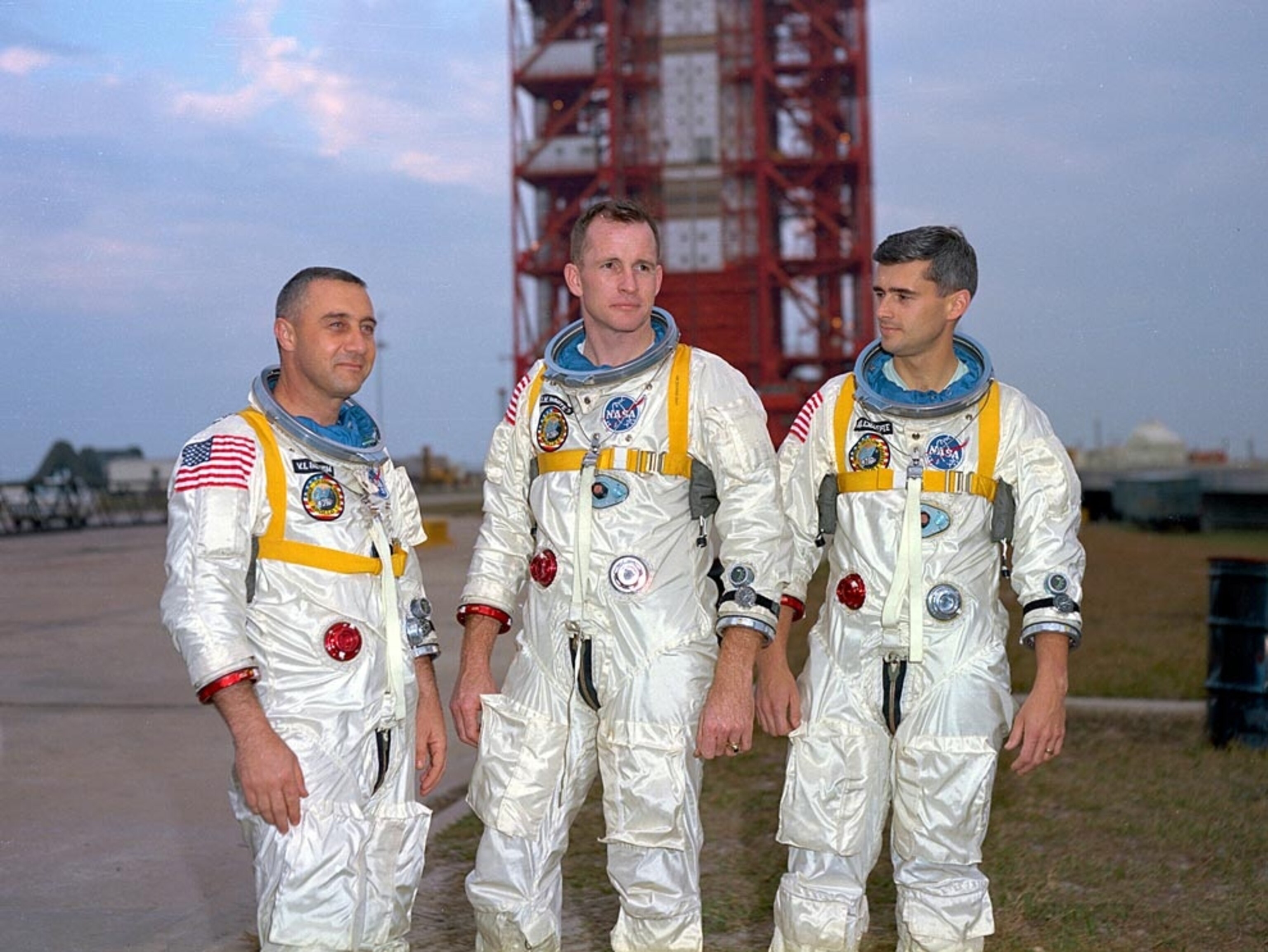
Looking to the moon
Moon missions are essential to the exploration of more distant worlds. After a long hiatus from the lunar neighborhood, NASA is again setting its sights on Earth’s nearest celestial neighbor with an ambitious plan to place a space station in lunar orbit sometime in the next decade. Sooner, though, the agency’s Artemis program , a sister to the Apollo missions of the 1960s and 1970s, is aiming to put the first woman (and the next man) on the lunar surface by 2024.
FREE BONUS ISSUE
Extended lunar stays build the experience and expertise needed for the long-term space missions required to visit other planets. As well, the moon may also be used as a forward base of operations from which humans learn how to replenish essential supplies, such as rocket fuel and oxygen, by creating them from local material.
You May Also Like

In a first, NASA Mars lander feels shockwaves from meteor impacts

SpaceX takes 4 passengers to orbit—a glimpse at private spaceflight’s future

Why go back to the moon? NASA’s Artemis program has even bigger ambitions
Such skills are crucial for the future expansion of human presence into deeper space, which demands more independence from Earth-based resources. And although humans have visited the moon before, the cratered sphere still harbors its own scientific mysteries to be explored—including the presence and extent of water ice near the moon's south pole, which is one of the top target destinations for space exploration .
NASA is also enlisting the private sector to help it reach the moon. It has awarded three contracts to private companies working on developing human-rated lunar landers—including both Blue Origin and SpaceX. But the backbone of the Artemis program relies on a brand new, state-of-the-art spacecraft called Orion .
Archival Photos of Spaceflight
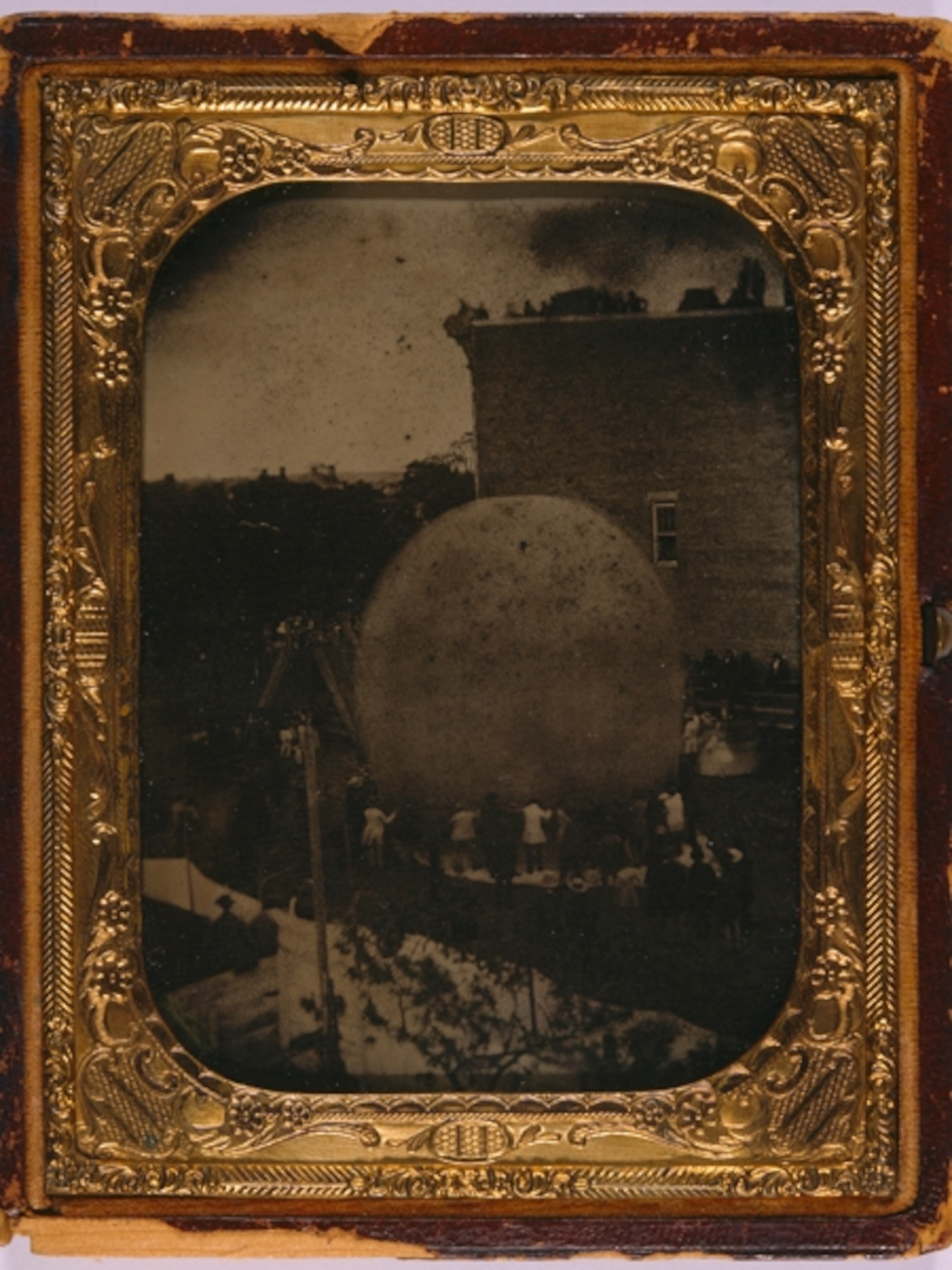
Currently being built and tested, Orion—like Crew Dragon and Starliner—is a space capsule similar to the spacecraft of the Mercury, Gemini, and Apollo programs, as well as Russia’s Soyuz spacecraft. But the Orion capsule is larger and can accommodate a four-person crew. And even though it has a somewhat retro design, the capsule concept is considered to be safer and more reliable than NASA’s space shuttle—a revolutionary vehicle for its time, but one that couldn’t fly beyond Earth’s orbit and suffered catastrophic failures.
Capsules, on the other hand, offer launch-abort capabilities that can protect astronauts in case of a rocket malfunction. And, their weight and design mean they can also travel beyond Earth’s immediate neighborhood, potentially ferrying humans to the moon, Mars, and beyond.
A new era in spaceflight
By moving into orbit with its Commercial Crew Program and partnering with private companies to reach the lunar surface, NASA hopes to change the economics of spaceflight by increasing competition and driving down costs. If space travel truly does become cheaper and more accessible, it’s possible that private citizens will routinely visit space and gaze upon our blue, watery home world—either from space capsules, space stations, or even space hotels like the inflatable habitats Bigelow Aerospace intends to build .
The United States isn’t the only country with its eyes on the sky. Russia regularly launches humans to the International Space Station aboard its Soyuz spacecraft. China is planning a large, multi-module space station capable of housing three taikonauts, and has already launched two orbiting test vehicles—Tiangong-1 and Tiangong-2, both of which safely burned up in the Earth’s atmosphere after several years in space.
Now, more than a dozen countries have the ability to launch rockets into Earth orbit. A half-dozen space agencies have designed spacecraft that shed the shackles of Earth’s gravity and traveled to the moon or Mars. And if all goes well, the United Arab Emirates will join that list in the summer of 2020 when its Hope spacecraft heads to the red planet . While there are no plans yet to send humans to Mars, these missions—and the discoveries that will come out of them—may help pave the way.
Related Topics
- SPACE EXPLORATION
- SCIENCE AND TECHNOLOGY

Second SpaceX megarocket launch ends with another explosion. What happens next?

Why did India land near the moon’s south pole?

U.S. returns to the moon as NASA's Odysseus successfully touches down

In the Arizona desert, NASA prepares for walking on the moon

The moon’s darkest corners are a mystery. This image offers a stunning new glimpse.
- Environment
- Perpetual Planet
History & Culture
- History & Culture
- Mind, Body, Wonder
- Paid Content
- Terms of Use
- Privacy Policy
- Your US State Privacy Rights
- Children's Online Privacy Policy
- Interest-Based Ads
- About Nielsen Measurement
- Do Not Sell or Share My Personal Information
- Nat Geo Home
- Attend a Live Event
- Book a Trip
- Inspire Your Kids
- Shop Nat Geo
- Visit the D.C. Museum
- Learn About Our Impact
- Support Our Mission
- Advertise With Us
- Customer Service
- Renew Subscription
- Manage Your Subscription
- Work at Nat Geo
- Sign Up for Our Newsletters
- Contribute to Protect the Planet
Copyright © 1996-2015 National Geographic Society Copyright © 2015-2024 National Geographic Partners, LLC. All rights reserved
- Subscribe to BBC Science Focus Magazine
- Previous Issues
- Future tech
- Everyday science
- Planet Earth
- Newsletters
Everything you need to know about space travel (almost)
We're a long way from home...
Paul Parsons
When did we first start exploring space?
The first human-made object to go into space was a German V2 missile , launched on a test flight in 1942. Although uncrewed, it reached an altitude of 189km (117 miles).
Former Nazi rocket scientists were later recruited by both America and Russia (often at gunpoint in the latter case), where they were instrumental in developing Intercontinental Ballistic Missiles (ICBMs) – rockets capable of carrying nuclear weapons from one side of the planet to the other.

It was these super-missiles that formed the basis for the space programmes of both post-war superpowers. As it happened, Russia was the first to reach Earth orbit, when it launched the uncrewed Sputnik 1 in October 1957, followed a month later by Sputnik 2, carrying the dog Laika – the first live animal in space.
The USA sent its first uncrewed satellite, Explorer 1, into orbit soon after, in January 1958. A slew of robotic spaceflights followed, from both sides of the Atlantic, before Russian cosmonaut Yuri Gagarin piloted Vostok 1 into orbit on 12 April 1961, to become the first human being in space . And from there the space race proper began, culminating in Neil Armstrong and Buzz Aldrin becoming the first people to walk on the Moon as part of NASA's Apollo programme .
Why is space travel important?
Space exploration is the future. It satisfies the human urge to explore and to travel, and in the years and decades to come it could even provide our species with new places to call home – especially relevant now, as Earth becomes increasingly crowded .
Extending our reach into space is also necessary for the advancement of science. Space telescopes like the Hubble Space Telescope and probes to the distant worlds of the Solar System are continually updating, and occasionally revolutionising, our understanding of astronomy and physics.
- Subscribe to the Science Focus Podcast on these services: Acast , iTunes , Stitcher , RSS , Overcast
But there are also some very practical reasons, such as mining asteroids for materials that are extremely rare here on Earth.
One example is the huge reserve of the chemical isotope helium-3 thought to be locked away in the soil on the surface of the Moon . This isotope is a potential fuel for future nuclear fusion reactors – power stations that tap into the same source of energy as the Sun. Unlike other fusion fuels, helium-3 gives off no hard-to-contain and deadly neutron radiation.
However, for this to happen the first challenge to overcome is how to build a base on the Moon. In 2019, China's Chang’e 4 mission marked the beginning of a new space race to conquer the Moon, signalling their intent to build a permanent lunar base , while the NASA Artemis mission plans to build a space station, called Lunar Orbital Platform-Gateway , providing a platform to ferry astronauts to the Moon's surface.
Could humans travel into interstellar space and how would we get there?
It’s entirely feasible that human explorers will visit the furthest reaches of our Solar System. The stars, however, are another matter. Interstellar space is so vast that it takes light – the fastest thing we know of in the Universe – years, centuries and millennia to traverse it. Faster-than-light travel may be possible one day, but is unlikely to become a reality in our lifetimes.
It’s not impossible that humans might one day cross this cosmic gulf, though it won’t be easy. The combustion-powered rocket engines of today certainly aren’t up to the job – they just don’t use fuel efficiently enough. Instead, interstellar spacecraft may create a rocket-like propulsion jet using electric and magnetic fields. This so-called ‘ ion drive ’ technology has already been tested aboard uncrewed Solar System probes.

Another possibility is to push spacecraft off towards the stars using the light from a high-powered laser . A consortium of scientists calling themselves Breakthrough Starshot is already planning to send a flotilla of tiny robotic probes to our nearest star, Proxima Centauri, using just this method.
Though whether human astronauts could survive such punishing acceleration, or the decades-long journey through deep space, remains to be seen.
How do we benefit from space exploration?
Pushing forward the frontiers of science is the stated goal of many space missions . But even the development of space travel technology itself can lead to unintended yet beneficial ‘spin-off’ technologies with some very down-to-earth applications.
Notable spin-offs from the US space programme, NASA, include memory foam mattresses, artificial hearts, and the lubricant spray WD-40. Doubtless, there are many more to come.
Read more about space exploration:
- The next giant leaps: The UK missions getting us to the Moon
- Move over, Mars: why we should look further afield for future human colonies
- Everything you need to know about the Voyager mission
- 6 out-of-this-world experiments recreating space on Earth
Space exploration also instils a sense of wonder, it reminds us that there are issues beyond our humdrum planet and its petty squabbles, and without doubt it helps to inspire each new generation of young scientists. It’s also an insurance policy. We’re now all too aware that global calamities can and do happen – for instance, climate change and the giant asteroid that smashed into the Earth 65 million years ago, leading to the total extinction of the dinosaurs .
The lesson for the human species is that we keep all our eggs in one basket at our peril. On the other hand, a healthy space programme, and the means to travel to other worlds, gives us an out.
Is space travel dangerous?
In short, yes – very. Reaching orbit means accelerating up to around 28,000kph (17,000mph, or 22 times the speed of sound ). If anything goes wrong at that speed, it’s seldom good news.
Then there’s the growing cloud of space junk to contend with in Earth's orbit – defunct satellites, discarded rocket stages and other detritus – all moving just as fast. A five-gram bolt hitting at orbital speed packs as much energy as a 200kg weight dropped from the top of an 18-storey building.

And getting to space is just the start of the danger. The principal hazard once there is cancer-producing radiation – the typical dose from one day in space is equivalent to what you’d receive over an entire year back on Earth, thanks to the planet’s atmosphere and protective magnetic field.
Add to that the icy cold airless vacuum , the need to bring all your own food and water, plus the effects of long-duration weightlessness on bone density, the brain and muscular condition – including that of the heart – and it soon becomes clear that venturing into space really isn’t for the faint-hearted.
When will space travel be available to everyone?
It’s already happening – that is, assuming your pockets are deep enough. The first self-funded ‘space tourist’ was US businessman Dennis Tito, who in 2001 spent a week aboard the International Space Station (ISS) for the cool sum of $20m (£15m).
Virgin Galactic has long been promising to take customers on short sub-orbital hops into space – where passengers get to experience rocket propulsion and several minutes of weightlessness, before gliding back to a runway landing on Earth, all for $250k (£190k). In late July 2020, the company unveiled the finished cabin in its SpaceShipTwo vehicle, suggesting that commercial spaceflights may begin shortly.

Meanwhile, Elon Musk’s SpaceX , which in May 2020 became the first private company to launch a human crew to Earth orbit aboard the Crew Dragon , plans to offer stays on the ISS for $35k (£27k) per night. SpaceX is now prototyping its huge Starship vehicle , which is designed to take 100 passengers from Earth to as far afield as Mars for around $20k (£15k) per head. Musk stated in January that he hoped to be operating 1,000 Starships by 2050.
10 Short Lessons in Space Travel by Paul Parsons is out now (£9.99, Michael O'Mara)
- Buy now from Amazon UK , Foyles , WH Smith and Wordery
Share this article

- Terms & Conditions
- Privacy policy
- Cookies policy
- Code of conduct
- Magazine subscriptions
- Manage preferences
- Search Please fill out this field.
- Manage Your Subscription
- Give a Gift Subscription
- Sweepstakes
- Space Travel + Astronomy
13 Things Tourists Should Know Before Traveling to Space, According to Astronauts
We asked the pros for their best tips on handling a first trip to space.
:max_bytes(150000):strip_icc():format(webp)/Stefanie-Waldek-7eed18a8c9734cb28c5d887eb583f816.jpg)
For most of human spaceflight history, those lucky enough to reach the stars were professional astronauts hired and trained by government agencies around the world. But since the early 2000s, when seven intrepid travelers paid millions to spend a few days aboard the International Space Station (ISS), space tourism has begun to take off. We're now on the cusp of a new era of space exploration, with commercial companies like Virgin Galactic and Blue Origin launching spacecraft capable of taking paying travelers beyond the Earth's surface.
We spoke with former NASA astronauts Leroy Chiao and Scott Parazynski to get their tips for first-time spaceflight participants. During his 15 years with NASA, Chiao participated in four missions — three aboard the space shuttle and one to the ISS, in which he served as commander. Parazynski worked at NASA for 17 years, flying five shuttle missions throughout his career. Read on to discover what they think aspiring space tourists need to know.
Your only job on the flight will be to kick back, relax, and enjoy the ride.
If you're taking a suborbital flight, which is what companies like Virgin Galactic and Blue Origin have offered, your ride will be a quick up-and-down to reach space, rather than a full orbit of the Earth. The short journey is relatively easy compared to what professional astronauts experience. For starters, you won't need to worry about flying your spacecraft. That's all up to the spaceflight provider. "You won't have any responsibility other than to enjoy the experience — and not kick anyone else in the head," says Parazynski. "Their obligations on the flight are pretty straightforward."
As such, the training programs for suborbital space tourist experiences are relatively minimal, perhaps only a few days in length at most. "The downside of not having a lot of training is that you don't have the confidence that comes from lots of training," says Parazynski. "Contrast that with the training I had on the space shuttle, where we trained for hundreds and hundreds of hours for launching in space. If something were to go awry, we would know exactly what to do and our hearts wouldn't skip a beat."
So, other than learning to place your complete trust in your spaceflight provider, Parazynski recommends talking to people who have flown before in order to ease any nervousness. Chiao agrees: "The best advice I can give on launch — and it's easy to say, harder to do — is to try to relax and enjoy the whole process," he says. "Pay attention during your training, talk to other people who've been there if you can. And actually, you might be surprised — it's quite calm!"
Make sure you’re physically and mentally fit.
"I think people should treat this as their Olympics or Super Bowl. This is a really big life experience, and though you don't need to be an Olympic athlete or a Super Bowl champion to fly in space, it helps to be fit," says Parazynski. After all, your body will be experiencing quite a range of new sensations during your spaceflight."
But it's not just about physical fitness — mental fitness is key, too. "I think through fitness comes mental acuity as well," says Parazynski. "The more you can be engaged in the experience, the more you'll remember of it — it'll be more impactful to you."
The G-forces experienced on launch and reentry are not as intense as you might expect.
If you've ever watched a livestream of an astronaut launch, caught any Hollywood flick about space travel, or ridden Mission: Space at Walt Disney World's Epcot theme park, you know that during launch, astronauts get crushed back into their seats. (And, actually, during reentry, too!) They're experiencing strong G-forces, or a sensation of weight felt during acceleration. It's the same feeling you get when you speed up quickly in a car or zoom through a loop or a sharp curve on a roller coaster, but during a rocket launch, those forces are stronger and more sustained. While the experience might seem a little terrifying, the pros say it's quite manageable.
"The G-forces aren't nearly as bad as they show in the movies," says Chiao. "If you're good enough to be given medical approval to go on a trip like this, you're not going to have any problems handling the G-forces." He also notes that you'll likely go through centrifugal runs during your training to prep for the sensation — you'll be strapped into a spinning machine that lets you experience strong G-forces, just like that spinning amusement park ride where you're pressed against the wall and the floor drops.
But to make launch and reentry as comfortable on your body as possible, you'll want to physically relax your muscles so you don't fight against the G-forces. "If you relax and let your body sink into the launch couch, you're going to tolerate it much better," says Chiao. "If you're rigid, that's where you might hurt yourself. And make sure your limbs and arms are inside of the couch."
To prep for weightlessness, you should book a zero-gravity flight.
While it takes quite a bit of effort (and time and money) to get into space to experience weightlessness, you can actually experience the sensation right here on Earth — or rather, just slightly above it. All you need to do is book a zero-gravity flight , where a plane flies in a series of parabolas (or arch-like shapes) during which passengers experience simulated weightlessness through free fall.
It's physically the same as skydiving or even riding a roller coaster, but in those two instances, your senses tell you you're actually falling. "When you're in a zero-G airplane, the airplane is falling at the same rate you are, so you're floating inside the airplane," says Chiao. "That's what it's like in a spacecraft when you get up into space and the engines cut off."
Through commercial companies like the Zero Gravity Corporation , anyone who can spare the cost of a ticket can experience weightlessness — and anyone who's planning on making a trip to space should definitely give it a go. "If they have the means, they should get on a zero-G flight before they go on a suborbital flight," says Parazynski. "It would take some of the mystery out of 'what am I going to feel like?' and 'how do I move?'"
Learning how to scuba dive is good weightlessness training, too.
While being underwater isn't exactly like floating in space, it's a pretty good way to practice moving around in a weightless environment. In fact, NASA even has a life-sized replica of the ISS set inside a giant pool, so astronauts can train for spacewalks underwater.
"Moving in weightlessness comes to you very quickly when you spend some time underwater," says Parazynski. "Get neutrally buoyant underwater and very gently try and move yourself along the ocean floor or bottom of your pool. It doesn't take a lot of force, but it does take a lot of thought."
Come up with a game plan for your few minutes in space.
On suborbital flights, you're only going to have a few minutes in weightlessness, so you should plan exactly how you want to spend your time up there. Figure out if you'd like to bring a memento like a family photo or college pennant for a fun picture. (U.S. Naval Academy graduates and former astronauts Wally Schirra and Tom Stafford famously put a "Beat Army" sign in the window of their Gemini VI spacecraft, so there's a long tradition of this.) Decide in advance if you want to attempt what spaceflight veterans call "stupid astronaut tricks," like flips or spins. But most importantly, budget time to look out the window.
"The most important thing I would tell future astronauts is to savor the view out the window," says Parazynski. "It's, for lack of a better term, a God's-eye view, and so few people have ever had a chance to see it. It's really a beautiful thing to be hovering in space and looking down at your planet."
Don’t worry about taking your own photos.
"As far as taking photographs, I don't know that I would recommend it," says Chiao. "You're not going to be very good at it, first of all, because it takes a little bit of practice to get used to zero-G. Don't waste that time taking photos. Get your memories, look out those windows, and enjoy the whole experience of being weightless." Plus, given the price tag of these spaceflights, we're pretty sure that your operator will provide you with photos and videos of your journey anyway.
When you get into zero gravity, you might feel a little dizzy.
The body functions a bit differently when you remove gravity from the equation for a sustained period of time, and side effects may include dizziness and nausea. "You're going to feel full-headed because there's no longer gravity pulling fluid down into your legs," says Chiao. "And so all that fluid comes up into your torso, and you can feel it right away. It feels kind of like you're standing on your head."
But the good news is, on suborbital flights you might be able to avoid the worst of it. "The adrenaline and excitement are going to make you do OK at first, and by the time you might start feeling bad, it's time to strap back in and come back down," says Chiao.
If you’re spending a few days in space, be prepared for some bumps and bruises.
On a suborbital flight, you won't have a ton of time in space, so you won't really have to worry about acclimating to zero gravity. However, some private spaceflight companies are looking to send their clients up into orbit for longer stays and there are even talks of a space hotel within Voyager Station . If you're going to spend a few days or even a few weeks up in space, you're probably going to bump your head more than once, no matter how much you've trained for the experience.
"It's really funny watching rookie astronauts the first day or two up on a mission," says Parazynski. "We called them the bull in a china shop. They push off with full force and they crack their skull or bang their knee."
You’re also going to make a mess.
Doing routine tasks like brushing your teeth (you can't just spit your toothpaste into a sink), clipping your fingernails (you don't want them floating off into your space station), and going to the bathroom (have you ever thought about how to use a toilet without gravity?) are all very different experiences in weightlessness. Inevitably, you might have a few mishaps early on in your trip.
"Just sitting down for a meal, you put your fork down, and it's gone in 30 seconds," says Parazynski. "You may find it two days later in the cabin air cleaner because that's where the air currents have taken it." Luckily, a lost fork is an easy mess to clean up — and the situation can be prevented by tethering it down. Other messes are a different story.
"As far as using the restroom, that's what you need to pay attention to during your training. The toilet is not particularly simple and you have to be careful," says Chiao. (In case you were wondering, space toilets use airflow to guide things where they're supposed to go.) "But be prepared to make some messes," says Chiao. "And everybody has to clean up their own mess."
If you’re going to do a spacewalk, the stakes are much higher for you and your crew.
If you want to zip around space with a jetpack like George Clooney in "Gravity," sorry, but chances are that's not going to happen any time soon. Most private astronauts will be safely tucked inside their craft for the duration of their flight.
Unlike suborbital flights, future orbital flights with a spacewalk will require extensive training, given that spacewalks are inherently more dangerous than simply riding in a vessel. "If you're careless with your tethers and you float off into the void, there's not a whole lot anyone can come do for you," says Parazynski. It's possible that a crewmate may be able to head out to rescue you, but then you're endangering their life as well. "It's paramount for a spacewalker to think not just about their own health and well-being and their experience, but also that of their crewmates," he says.
If you’re in a capsule, be prepared for a bumpy landing.
While the only way up to space is by rocket, there are two ways to come back down: via a winged vehicle, like the space shuttle or Virgin Galactic's SpaceShipTwo, or a capsule, like Apollo, Soyuz, and Blue Origin's New Shepard. The experiences are quite different, as winged vehicles land like an airplane on a runway, whereas capsules descend beneath parachutes onto land or water. While both experience a range of G-forces during reentry, capsules have a bit of a rougher ride, particularly at the very end.
"When the parachute comes out, you can expect to get jostled around a fair amount, so that can be disorienting," says Chiao. "Then, whether you're hitting the water or the ground, you're gonna get a good bump. There are shock-absorbing mechanisms, of course, that make it not too big a deal. But on Soyuz, you smack the ground pretty darn hard. It was kind of surprising!"
It’ll be worth every penny.
Sure, it's going to cost a small fortune to go into space as a tourist — for now, that's somewhere in the ballpark of several hundred thousand dollars for a suborbital flight and millions of dollars for longer-duration orbital stays. But ask any astronaut, and they're sure to tell you it'll be worth the investment.
"What I would tell prospective astronauts is that it's going to change their lives forever," says Parazynski. "It's a perspective that can't be captured in emotion on film. Even in 3D IMAX, there's no way to capture the way it's going to make you feel, the connectedness you feel to planet Earth, and the awe you have when you look out into the universe."
- Share full article
Advertisement
Supported by
The Future of Space Tourism Is Now. Well, Not Quite.
From zero-pressure balloon trips to astronaut boot camps, reservations for getting off the planet — or pretending to — are skyrocketing. The prices, however, are still out of this world.

By Debra Kamin
Ilida Alvarez has dreamed of traveling to space since she was a child. But Ms. Alvarez, a legal-mediation firm owner, is afraid of flying, and she isn’t a billionaire — two facts that she was sure, until just a few weeks ago, would keep her fantasy as out of reach as the stars. She was wrong.
Ms. Alvarez, 46, and her husband, Rafael Landestoy, recently booked a flight on a 10-person pressurized capsule that — attached to a massive helium-filled balloon — will gently float to 100,000 feet while passengers sip champagne and recline in ergonomic chairs. The reservation required a $500 deposit; the flight itself will cost $50,000 and last six to 12 hours.
“I feel like it was tailor-made for the chickens like me who don’t want to get on a rocket,” said Ms. Alvarez, whose flight, organized by a company called World View , is scheduled to depart from the Grand Canyon in 2024.
Less than a year after Jeff Bezos and Richard Branson kicked off a commercial space race by blasting into the upper atmosphere within weeks of each other last summer, the global space tourism market is skyrocketing, with dozens of companies now offering reservations for everything from zero-pressure balloon trips to astronaut boot camps and simulated zero-gravity flights. But don’t don your spacesuit just yet. While the financial services company UBS estimates the space travel market will be worth $3 billion by 2030, the Federal Aviation Administration has yet to approve most out-of-this-world trips, and construction has not started on the first space hotel. And while access and options — not to mention launchpads — are burgeoning, space tourism remains astronomically expensive for most.
First, what counts as space travel?
Sixty miles (about 100 kilometers) above our heads lies the Kármán line, the widely accepted aeronautical boundary of the earth’s atmosphere. It’s the boundary used by the Féderátion Aéronautique Internationale, which certifies and controls global astronautical records. But many organizations in the United States, including the F.A.A. and NASA, define everything above 50 miles to be space.
Much of the attention has been focused on a trio of billionaire-led rocket companies: Mr. Bezos’ Blue Origin , whose passengers have included William Shatner; Mr. Branson’s Virgin Galactic , where tickets for a suborbital spaceflight start at $450,000; and Elon Musk’s SpaceX , which in September launched an all-civilian spaceflight, with no trained astronauts on board. Mr. Branson’s inaugural Virgin Galactic flight in 2021 reached about 53 miles, while Blue Origin flies above the 62-mile mark. Both are eclipsed by SpaceX, whose rockets charge far deeper in to the cosmos, reaching more than 120 miles above Earth.
Balloons, like those operated by World View, don’t go nearly as high. But even at their maximum altitude of 18 or 19 miles, operators say they float high enough to show travelers the curvature of the planet, and give them a chance to experience the overview effect — an intense perspective shift that many astronauts say kicks in when you view Earth from above.
Now, how to get there …
Blue Origin and Virgin Galactic, which are both licensed for passenger space travel by the F.A.A., are open for ticket sales. (Blue Origin remains mum on pricing.) Both companies currently have hundreds or even thousands of earthlings on their wait lists for a whirl to the edge of space. SpaceX charges tens of millions of dollars for its further-reaching flights and is building a new facility in Texas that is currently under F.A.A. review.
Craig Curran is a major space enthusiast — he’s held a reserved seat on a Virgin Galactic flight since 2011 — and the owner of Deprez Travel in Rochester, N.Y. The travel agency has a special space travel arm, Galactic Experiences by Deprez , through which Mr. Curran sells everything from rocket launch tickets to astronaut training.
Sales in the space tourism space, Mr. Curran acknowledges, “are reasonably difficult to make,” and mostly come from peer-to-peer networking. “You can imagine that people who spend $450,000 to go to space probably operate in circles that are not the same as yours and mine,” he said.
Some of Mr. Curran’s most popular offerings include flights where you can experience the same stomach-dropping feeling of zero gravity that astronauts feel in space, which he arranges for clients via chartered, specialized Boeing 727s that are flown in parabolic arcs to mimic being in space. Operators including Zero G also offer the service; the cost is around $8,200.
You can almost count the number of completed space tourist launches on one hand — Blue Origin has had four; SpaceX, two. Virgin Galactic, meanwhile, on Thursday announced the launch of its commercial passenger service, previously scheduled for late 2022, was delayed until early 2023. Many of those on waiting lists are biding their time before blastoff by signing up for training. Axiom Space, which contracts with SpaceX, currently offers NASA-partnered training at Houston’s Johnson Space Center. Virgin Galactic, which already offers a “customized Future Astronaut Readiness program” at its Spaceport America facility in New Mexico, is also partnering with NASA to build a training program for private astronauts.
Would-be space tourists should not expect the rigor that NASA astronauts face. Training for Virgin Galactic’s three-hour trips is included in the cost of a ticket and lasts a handful of days; it includes pilot briefings and being “fitted for your bespoke Under Armour spacesuit and boots,” according to its website.
Not ready for a rocket? Balloon rides offer a less hair-raising celestial experience.
“We go to space at 12 miles an hour, which means that it’s very smooth and very gentle. You’re not rocketing away from earth,” said Jane Poynter, a co-founder and co-chief executive of Space Perspective , which is readying its own touristic balloon spaceship, Spaceship Neptune. If all goes according to plan, voyages are scheduled to begin departing from Florida in 2024, at a cost of $125,000 per person. That’s a fraction of the price tag for Blue Origin and Virgin Galactic, but still more than double the average annual salary of an American worker.
Neither Space Perspective nor World View has the required approval yet from the F.A.A. to operate flights.
Unique implications
Whether a capsule or a rocket is your transport, the travel insurance company battleface launched a civilian space insurance plan in late 2021, a direct response, said chief executive Sasha Gainullin, to an increase in space tourism interest and infrastructure. Benefits include accidental death and permanent disablement in space and are valid for spaceflights on operators like SpaceX, Blue Origin and Virgin Galactic, as well as on stratospheric balloon rides. They’ve had many inquiries, Mr. Gainullin said, but no purchases just yet.
“Right now it’s such high-net-worth individuals who are traveling to space, so they probably don’t need insurance,” he said. “But for quote-unquote regular travelers, I think we’ll see some takeups soon.”
And as the industry grows, so perhaps will space travel’s impact on the environment. Not only do rocket launches have immense carbon footprints, even some stratospheric balloon flights have potentially significant implications: World View’s balloons are powered by thousands of cubic meters of helium, which is a limited resource . But Ted Parson, a professor of environmental law at the University of California, Los Angeles, said that space travel’s environmental impact is still dwarfed by civil aviation. And because space travel is ultra-niche, he believes it’s likely to stay that way.
“Despite extensive projections, space tourism is likely to remain a tiny fraction of commercial space exploration,” he said. “It reminds me of tourism on Mt. Everest. It’s the indulgence of very rich people seeking a transcendent, once-in-a-lifetime experience, and the local environmental burden is intense.”
Stay a while?
In the future, space enthusiasts insist, travelers won’t be traveling to space just for the ride. They’ll want to stay a while. Orbital Assembly Corporation, a manufacturing company whose goal is to colonize space, is currently building the world’s first space hotels — two ring-shaped properties that will orbit Earth, called Pioneer Station and Voyager Station. The company, quite optimistically, projects an opening date of 2025 for Pioneer Station, with a capacity of 28 guests. The design for the larger Voyager Station , which they say will open in 2027, promises villas and suites, as well as a gym, restaurant and bar. Both provide the ultimate luxury: simulated gravity. Axiom Space , a space infrastructure company, is currently building the world’s first private space station; plans include Philippe Starck-designed accommodations for travelers to spend the night.
Joshua Bush, chief executive of travel agency Avenue Two Travel , has sold a handful of seats on upcoming Virgin Galactic flights to customers. The market for space travel (and the sky-high prices that come with it), he believes, will evolve much like civilian air travel did.
“In the beginning of the 20th century, only very affluent people could afford to fly,” he said. “Just as we have Spirit and Southwest Airlines today, there will be some sort of equivalent of that in space travel, too. Hopefully within my lifetime.”

52 Places for a Changed World
The 2022 list highlights places around the globe where travelers can be part of the solution.
Follow New York Times Travel on Instagram , Twitter and Facebook . And sign up for our weekly Travel Dispatch newsletter to receive expert tips on traveling smarter and inspiration for your next vacation. Dreaming up a future getaway or just armchair traveling? Check out our 52 Places for a Changed World for 2022.
What’s Up in Space and Astronomy
Keep track of things going on in our solar system and all around the universe..
Never miss an eclipse, a meteor shower, a rocket launch or any other 2024 event that’s out of this world with our space and astronomy calendar .
Scientists may have discovered a major flaw in their understanding of dark energy, a mysterious cosmic force . That could be good news for the fate of the universe.
A new set of computer simulations, which take into account the effects of stars moving past our solar system, has effectively made it harder to predict Earth’s future and reconstruct its past.
Dante Lauretta, the planetary scientist who led the OSIRIS-REx mission to retrieve a handful of space dust , discusses his next final frontier.
A nova named T Coronae Borealis lit up the night about 80 years ago. Astronomers say it’s expected to put on another show in the coming months.
Is Pluto a planet? And what is a planet, anyway? Test your knowledge here .
Finding the Universe
Travel tales, photography and a dash of humor
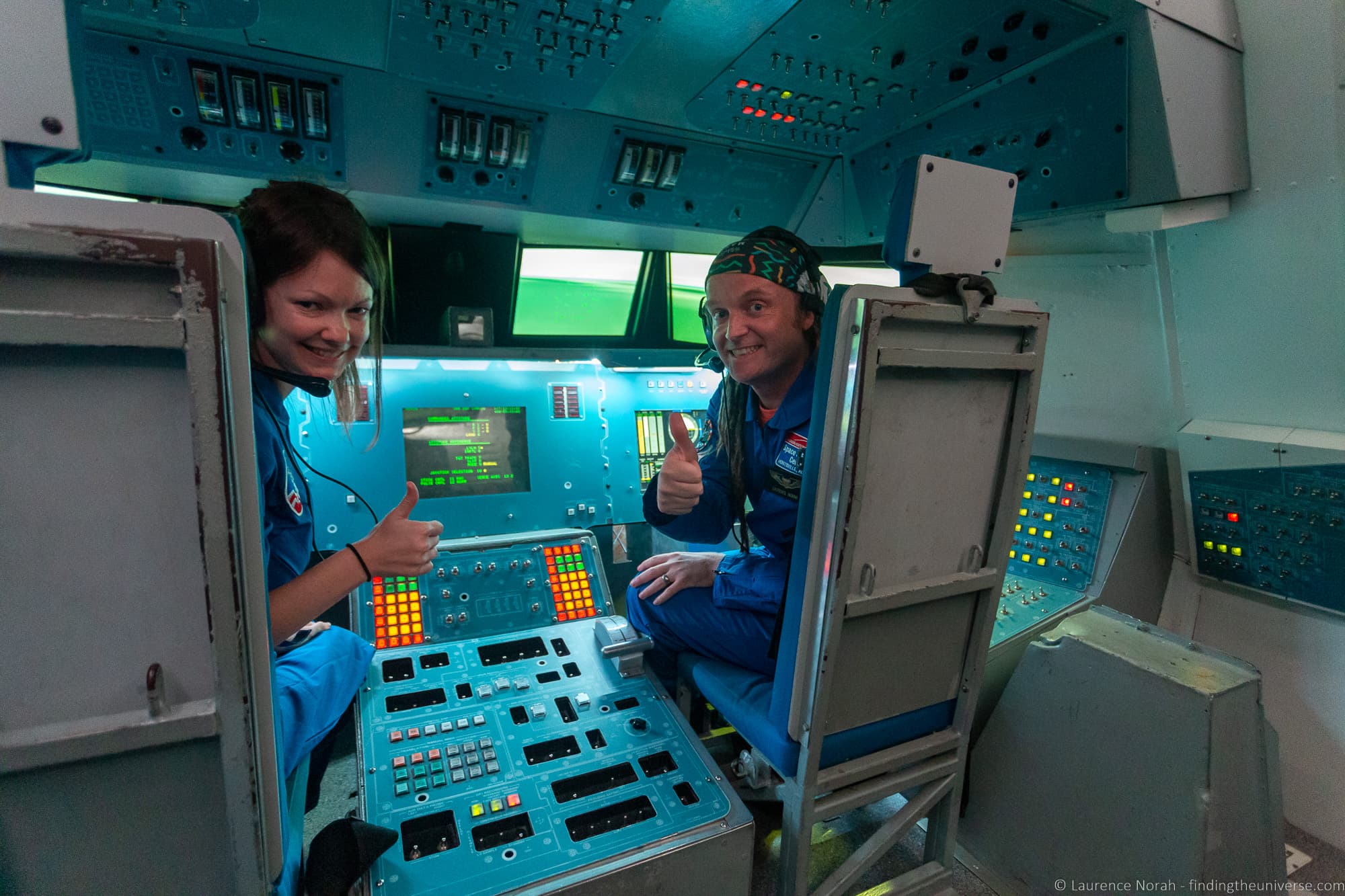
Space Tourism: How to Visit Space as a Tourist
Last updated: August 28, 2023 . Written by Laurence Norah - 4 Comments
Despite the name of this blog, I have been distressingly earth bound for all of my years thus far. Given recent developments in space exploration technology though, hope is not yet lost for the dream of going into space as a tourist – without having to shell out the millions of dollars that past tourists have paid!
In today’s post, I’m going to talk about a few things. I’m going to cover where space travel & exploration is today.
I’m going to talk about what options we have now, and may have in the future, for getting into space as a tourist. And I’m also going to cover a few ways those of us stuck on Earth without access to a giant pile of cash can still get our space fix around the world!
The State of Space Travel as a Tourist in 2023
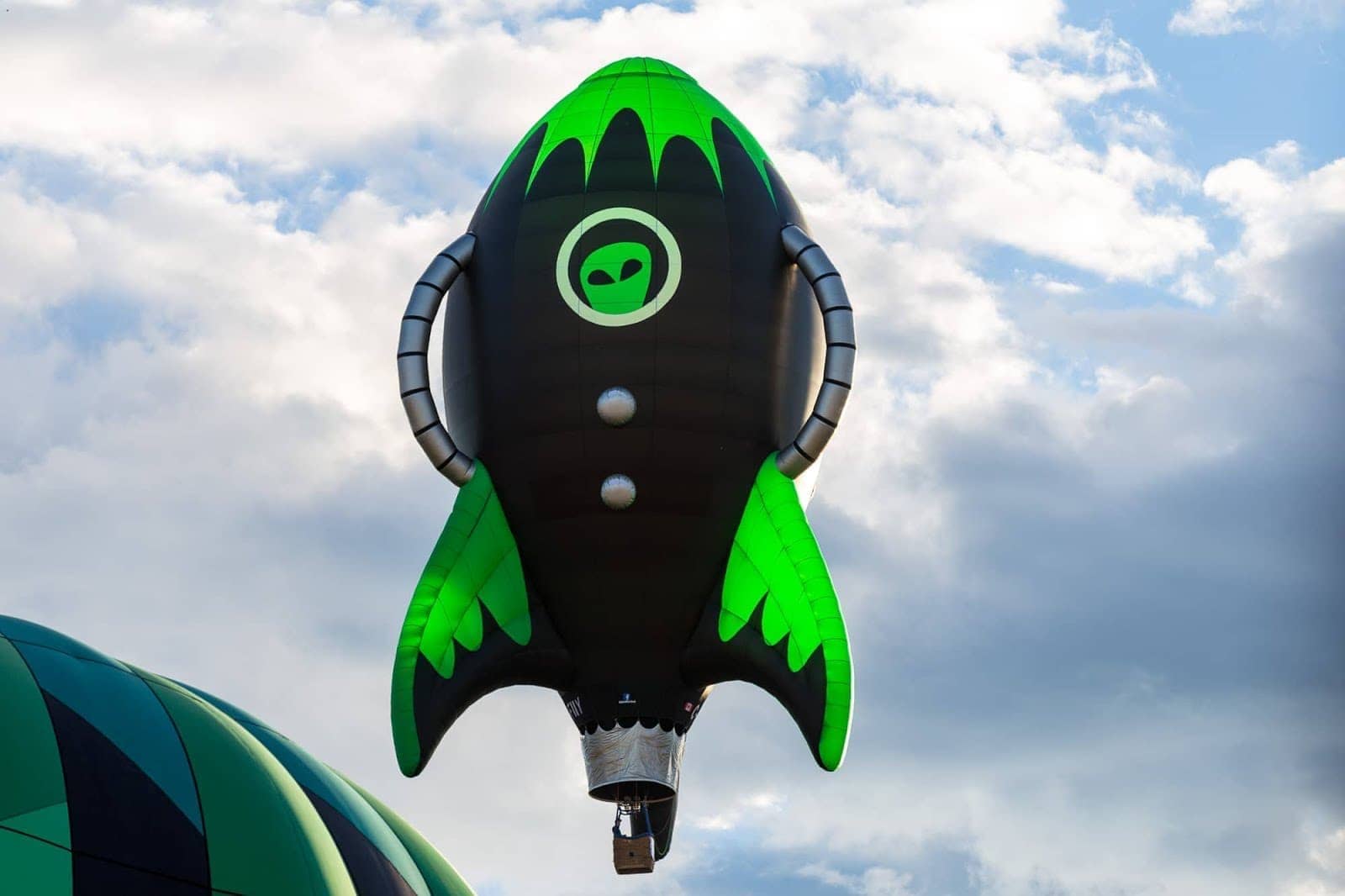
Huge strides are happening right now in space exploration, particularly with private companies looking at opening up space to your average person. Admittedly, right now, space tourism isn’t exactly accessible.
Up to 2009, only 7 people made it into space as tourists, all travelling with the Russian Space Agency, and all paying in excess of USD $20 million.
These weren’t exactly hop-on hop-off trips either, with the participants undergoing months of training, and many of them actively running their own experiments in space. So to call them space tourists is perhaps a bit of a misnomer.
However, things have now changed, and trips into space are becoming more affordable. Admittedly, they aren’t exactly “budget”, but they are less than $20 million a go.
So what’s changed?
Well, put simply, private investment. Whilst massive government organisations like NASA , the Russian Space Agency and the European Space Agency are always researching and expanding their space exploration efforts, their focus isn’t exactly on getting folks like you and me into space – at least not in the near term. Their focus is on long term scientifically focused exploration missions, with perhaps the most exciting being NASA’s Journey to Mars .
Other organisations though, see the potential for space based tourism as a way to generate funds and publicity for their projects. There are three main players in the space tourism business right now – Virgin Galactic , SpaceX and Blue Origin .
Let’s take a look at the main players with whom you have a real chance of getting into space within the next few years.
How to Go To Space As A Tourist
Other than flagging down a passing UFO Ford Prefect style, or signing up to be an astronaut with a government agency, getting into space is a bit tricky. But that’s all changing, and these are the companies with whom you are most likely to be able to travel into space.
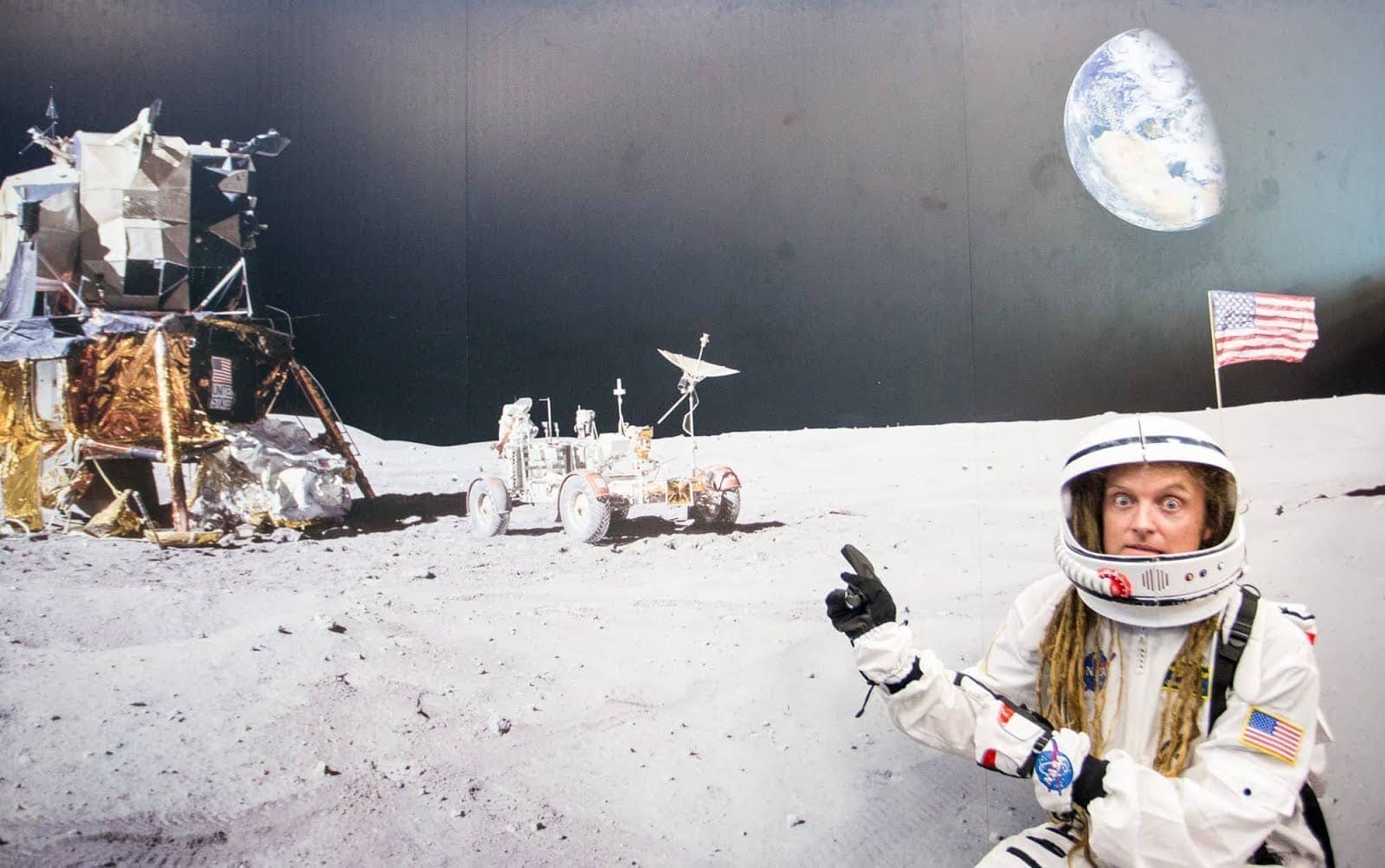
1. Virgin Galactic
Part of the Virgin Group headed up by Sir Richard Branson, Virgin Galactic currently offers sub-orbital flights to paying passengers aboard their SpaceShipTwo and SpaceShipThree craft.
Sub-orbital means that you’re not high enough to actually orbit the earth, but as the goal you do pass the 100km line that marks the edge of space, you will technically be in space, and also experience weightlessness. Hurrah!
The good news is that as of June 2023, commercial space flights have actually commenced. Trips are scheduled to go monthly, and you can now buy tickets for a voyage into space with Virgin Galactic. They are currently on sale for $450,000.
Admittedly, $450,000 USD isn’t exactly small change, but it’s a lot less expensive than the $20 million that previous space travellers have paid. For your money, you get three days of training at Spaceport America in New Mexico, a flight into space, a somewhat incredible view and a period of weightlessness. Not too bad.
2. Blue Origin
Owned by Amazon billionaire Jeff Bezos, Blue Origin is a private company which initially appeared to be focusing on sub-orbital flight, much like Virgin Galactic.
Unlike Virgin Galactic though, which uses a combination of a normal plane and a rocket plane to achieve the necessary space altitude, Blue Origin are using more conventional rocket technology, with a focus on re-usable components that cut the cost of launches.
Other than the spacecraft, the experience is largely the same – a sub-orbital flight that comprises a few days of training in Texas, a journey lasting around 11 minutes to up beyond the 100km line, weightlessness and some incredible views.
The technology to do this will look familiar to any fans of existing space flight technologies, including the capsule that returns to Earth by parachute, meaning that there are fewer technical hurdles to overcome.
As of 2021, flights have commenced on the New Shepherd, with Jeff Bezos being the first into space. The ticket for the first commercially available seat in the July 2021 launch was auctioned off for a cool $28 million.
Since that launch, there have been a number of flights with paying customers.
Regular pricing isn’t set, although it’s currently rumored to be around $1 million per seat. A timeframe for general availability of commercial flights isn’t yet known. You can sign up to be kept informed and updated however.
Perhaps even more excitingly than the New Shepherd program is its successor – the New Glenn program. This should offer longer duration, possibly even orbital flights, although details are currently sparse on the ground, with operations aimed to launch in late 2024. We do know however that priority on these trips will be given to New Shepherd customers.
Last in our trio of serious contenders for firms that will take your money and send you into space in the next few years is SpaceX .
SpaceX is owned by Elon Musk, who is particularly famous for being the CEO and co-founder of Tesla Inc, the electric car and battery manufacturer, amongst other things.
SpaceX largely focuses on commercial launch capabilities, with a particular focus on reusable rocket technologies that bring down the cost of putting payloads into orbit.
They’ve been hugely successful in this field, with multiple achievements, including being the first privately funded company to successfully launch, orbit and recover a spacecraft.
They were also the first private company to send a spacecraft to the International Space Station, and have since flown many missions to the ISS.
Whilst the majority of their work is on commercial and government contracts for putting things like satellites into orbit, some recent developments have put SpaceX firmly on the space tourism map.
First, in 2017 they announced that they had been contracted by two private individuals who want to go on a trip around the moon. This was originally due to launch in 2018, but has been postponed until at least 2024. It will be by far the most ambitious space tourism endeavor to date by any company, and you can read more about the project here .
SpaceX are also starting to sell tickets on their Crew Dragon capsule, which is the launch system NASA is using to shuttle astronauts to the ISS. These are not generally available, but a 3-day mission consisting entirely of tourists took place in 2021, with further missions expected. These are still priced in the tens of millions of dollars though, so don’t bank on these becoming affordable for a while to come.
Next, SpaceX is actively working on technology to colonise Mars, with a lofty goal of setting up a permanent colony on the red planet, home to over a million people, within the next 100 years.
Whilst the current estimate of cost for such a ride is in the region of $10 billion USD per person, SpaceX is aiming to bring that down to $100,000 through the development of their Interplanetary Transport System . This won’t happen in the near-term, but by the end of the century tourism to Mars might be a real possibility, with lunar and earth-orbital flights the norm by then.
4. Other Contenders
So those are the main players who, in my opinion, have the most realistic chances of taking you to space in the coming decade. But they aren’t the only players in the space tourism arena! Here are a few others to be aware of who might give you a chance of getting off Planet Earth.
Bigelow Aerospace: Bigelow Aerospace are actually a pretty major name when it comes to space technology, and if you ever happen to find yourself in a hotel on the moon or floating around the Earth, it’s likely going to be inside one of their inflatable habitats.
This isn’t theoretical either, they’ve got an inflatable capsule attached to the International Space Station already undergoing feasibility testing. Owner Robert Bigelow made his fortune in hotels, and he sees no reason why we can’t have them in space too.
Space Perspective: Space Perspective are taking a slightly different approach to everyone else, in that their route to space is to fly passengers 100,000ft above the ground in capsule carried aloft by a gigantic hydrogen filled balloon.
Ok, so 100,000ft isn’t exactly space, but it is high enough to see the curvature of the earth. It’s likely to be a more sedate and relaxed experience as well, compared to firing yourself into space on some sort of rocket at least. And whilst experiencing zero-gee isn’t going to be on the cards, you should be able to enjoy the views from the wraparound windows whilst enjoying a tipple from the on-board bar!
Tickets for 2024 flights have already sold out, but you can book for 2025 at a cost of $125,000 per person.
Boeing: Boeing are currently under contract with NASA to build a crew transport vehicle that would be compatible with a number of rocket systems, primarily for the purpose of shuttling astronauts to the ISS. It was originally due to start those flights in late 2018. However, testing did not start until late 2019, and the current timetable for crewed flights is now 2023.
As part of their contract, this CST-100 Starliner was specified to include one seat specifically for the purposes of space tourism , allowing one passenger to just tag along for the ride as it were. For a price, naturally. That price is currently unknown, although the original goal was to have it price competitive with the Russian Space Agency, so don’t expect it to come under the tens of millions mark!
Mars One: Mars One was an organisation with a goal of establishing a permanent human colony on Mars by the year 2035. Announced in 2012, it encouraged members of the public to sign up for the one-way mission, which resulted in over 200,000 applicants. That was whittled down to 100, and then a final 24 candidates.
Unfortunately, the project was dogged by criticism, particularly around the technical and financial feasibility of the plan. Finally, Mars One entered administration in 2019.
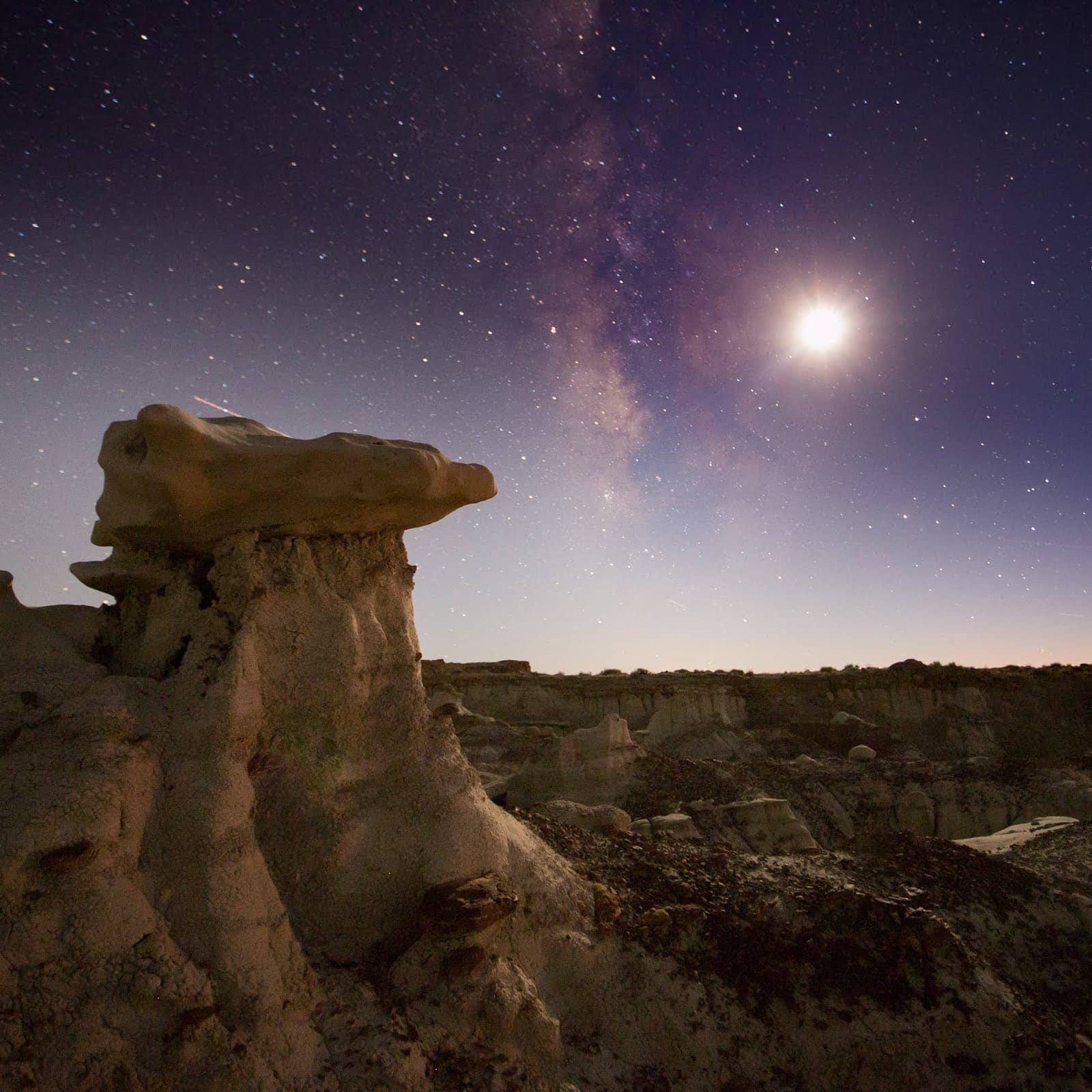
The Best Space Sights and Activities on Earth
Ok, so based on all the above, you’re probably realising that space is still a pretty tough place to get to right now, and even over the next few years it’s still going to be pretty darn expensive for a fairly brief jaunt.
Don’t fret though. Planet Earth is a pretty cool place, and there are a lot of space-related activities you can take part in without re-mortgaging your house and strapping yourself to a rocket.
Here are a few places you can learn about space and space travel in the meantime! Let’s look at these.
1. Active Spaceports
Whilst you might not get into space right now, you can still visit a spaceport and dream of the future! I’ve picked three spaceports for you to think about visiting.
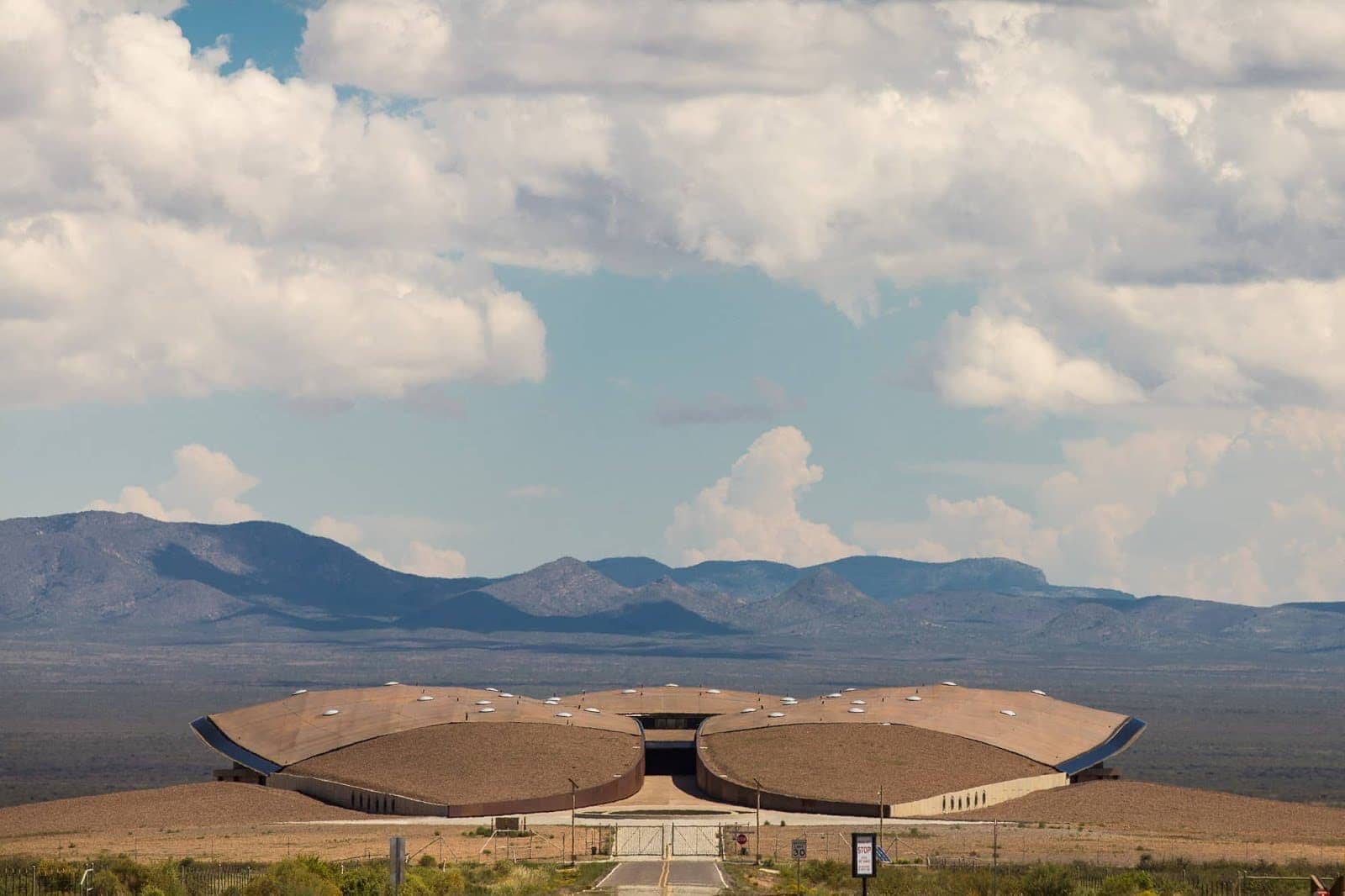
Spaceport America, USA. Set in the high New Mexican desert, Spaceport America is the world’s first purpose-built commercial spaceport, meaning it’s designed for commercial users. Yes, people like you and me. It’s the home base of Virgin Galactic, and is where that company will be operating from when they finally launch their space tourism flights. SpaceX also conduct some of their testing here. Unfortunately, you still can’t board a space trip here, but it’s a worthwhile place to visit, if only to get a tantalising glimpse of a possible future.
Kennedy Space Center, USA. Found in Florida, Kennedy Space Center is the main launch pad for NASA’s operations, and is where Apollo and Space shuttle launches took place. It’s a massive facility, spanning 144,000 acres. There’s a visitor centre on site, where you can learn all about NASA and it’s space operations, see an actual space shuttle and even experience a simulated space shuttle launch. Kennedy Space Center is still very much an active launch site, and you can also come here to watch rockets blast off into space – see their website for the launch schedule .
Baikonur Cosmodrome, Kazakhstan. One of the world’s most famous spaceports, and certainly the oldest and largest, Baikonur Cosmodrome is where the majority of Russia’s space program has operated from, including the first man into space, Yuri Gagarin. It’s still very active, and you can in theory visit, however prices are steep for a one day tour ($700+), and can only be arranged via a specialist tour operator in a complex process that needs to be booked weeks in advance.
2. Space Museums
As well as active space ports, there are a lot of museums around the world dedicated to sharing man’s activities in space. Here are a few of the best.
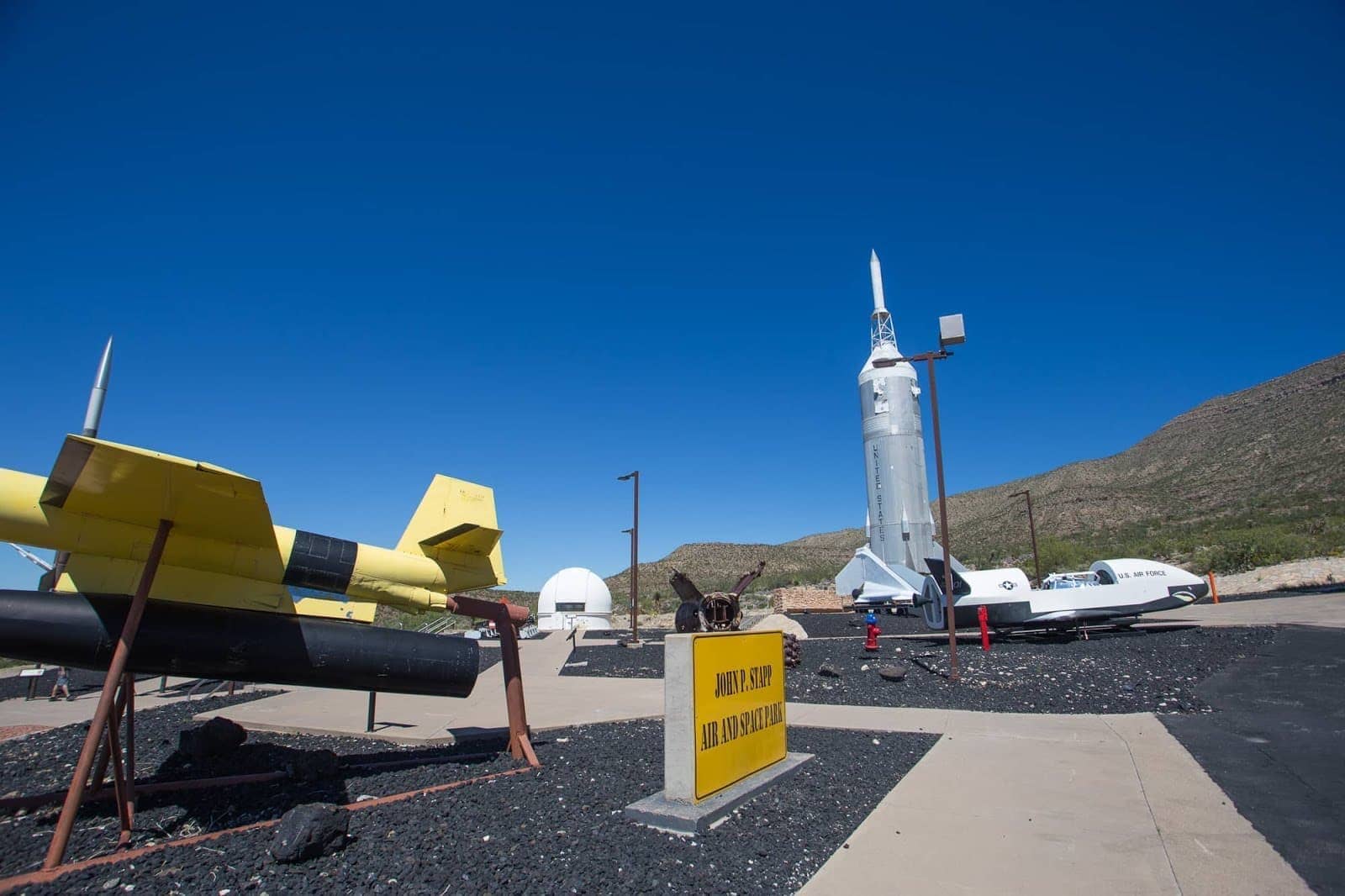
Space Center Houston, USA. The official visitor centre for NASA’s center for human spaceflight activities, Space Center Houston is an excellent place to come and learn all about NASA’s efforts around getting people into space. It has a number of artifacts from our explorations to date, including a lunar module replica and various actual capsules that have been into space. Tip – if you’re visiting a few sights in Houston, you can save money by investing in a CityPASS card which will get you into the Space Center as well as a number of other attractions in the city.
New Mexico Museum of Space History, USA. Found in Alamogordo in southern New Mexico, the five storey New Mexico Museum of Space History is full of information about man’s efforts to get into space, with everything from information on early rocket technology through to more modern day exhibits including a space shuttle landing simulator. It’s also home to the International Hall of Space Fame, a planetarium, and offers fantastic views across the White Sands National Monument.
Smithsonian National Air and Space Museum , USA . Found in Washington, D.C., this enormous museum is home to the world’s largest collection of historic aircraft and spacecraft in the world, including the Apollo 11 module and clothing worn by astronauts. With over 60,000 objects on display, you won’t run out of things to look at!
The National Space Centre, UK. Both a museum and an educational resource, the National Space Center in Leicester, UK, is home to six interactive galleries and the UK’s largest planetarium. A highlight though is the 42 metre high Rocket Tower , which houses a number of upright rockets, really giving you a feel for the enormity of these machines.
The U.S. Space and Rocket Center. Found in Huntsville, Alabama, right next door to NASA Marshall. The U.S. Space and Rocket Center has loads of information on the history of space flight, including two full size Saturn V rockets! This is also where you can attend Space Camp , a hands-on multi day training program for all ages, which will take you through a range of training similar to that which real astronauts do!
3. Space Themed Sights
We may be currently fairly stuck on the planet, but that doesn’t mean we’re not still hurtling through space, a small rock in a vast galaxy. Here are a few ways to help remind ourselves that there’s more out there than our horizon.
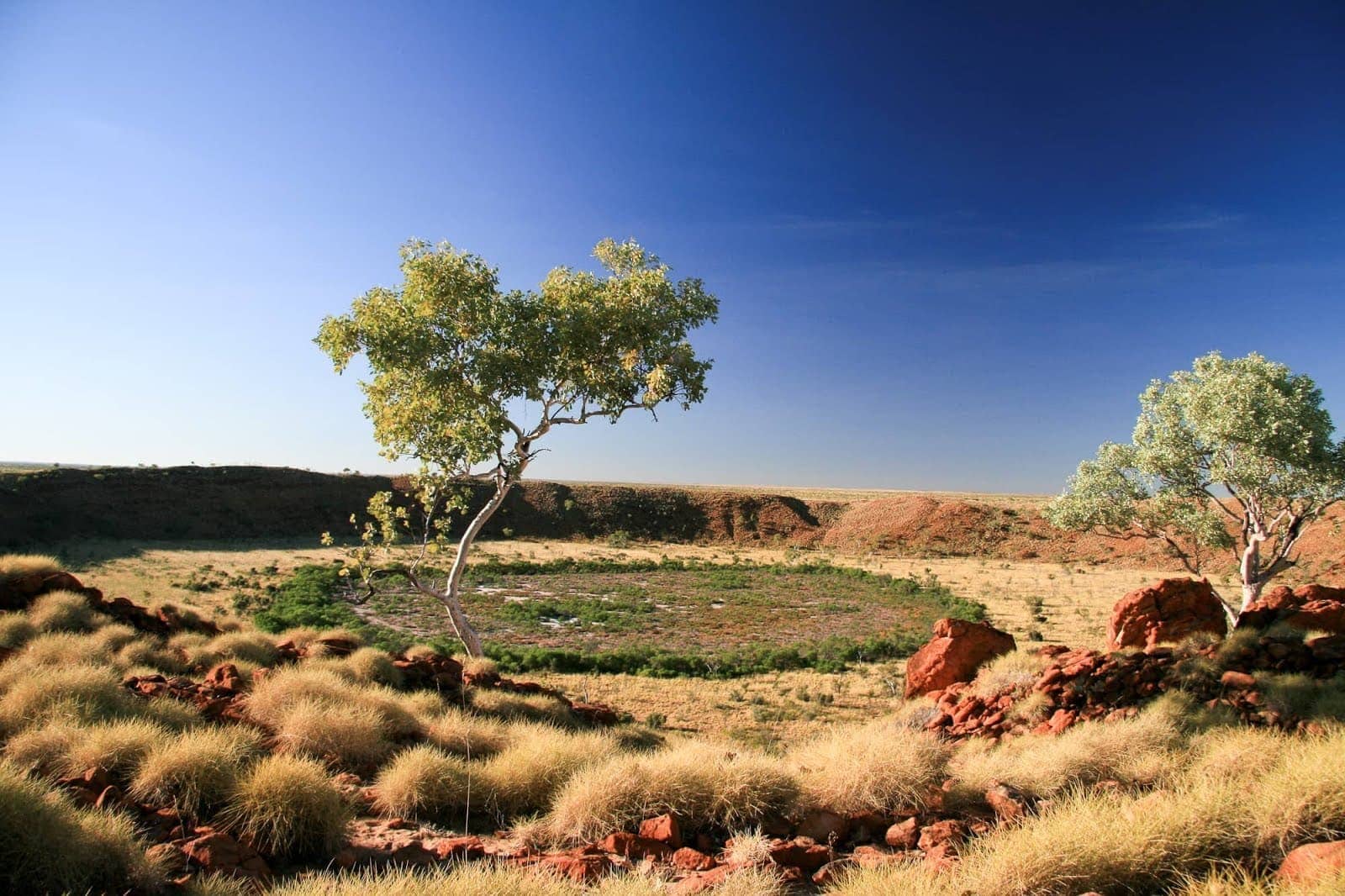
Meteor Craters. On our journey through space we regularly bump into errant lumps of space debris – around 100 tons a day in fact. Most often these lumps are so small (dust-specks really) that they just burn up in our atmosphere, creating beautiful shooting stars. However, anything larger than a marble has a chance of making to earth, although there are a lot of factors at work.
According to NASA , it’s the lumps that are around the size of a football field and up that make the most impact, and one of these hits us every couple of thousand of years. They can cause significant damage and leave a lasting impact. Two worth mentioning that you can visit are the aptly named “ Meteor Crater ” in Arizona, USA, and the Wolfe Creek Meteorite Crater in Western Australia. Both of these are around a kilometre in diameter, meaning you can see the whole structure with the naked eye and really get a feel for the force required to create such a hole. Of course you can also find smaller ones all over the world.
Star Gazing. You might not be able to get to the stars, but that doesn’t mean you can’t appreciate them. I always find that just lying back and staring into the vastness of space from a really dark location is a very powerful experience. You need to be somewhere far away from light pollution to get the best views of the night sky – there are dark sky preserves (and even festivals !) where you can get a great view, otherwise, head as far away from the lights as you can and just look up.
4. Giant Telescopes
How about if you can’t get into space, you try just looking at it through a really big magnifying glass and pretend you’re there? It might be as close as you can currently get to space for free, whilst also being wowed by humanities technological accomplishments. Below are four locations around the world where you can learn all about the art of looking into space. Of course, there are many more sites around the world and you can find a list of some of the major telescopes here although not all can be visited by the public.
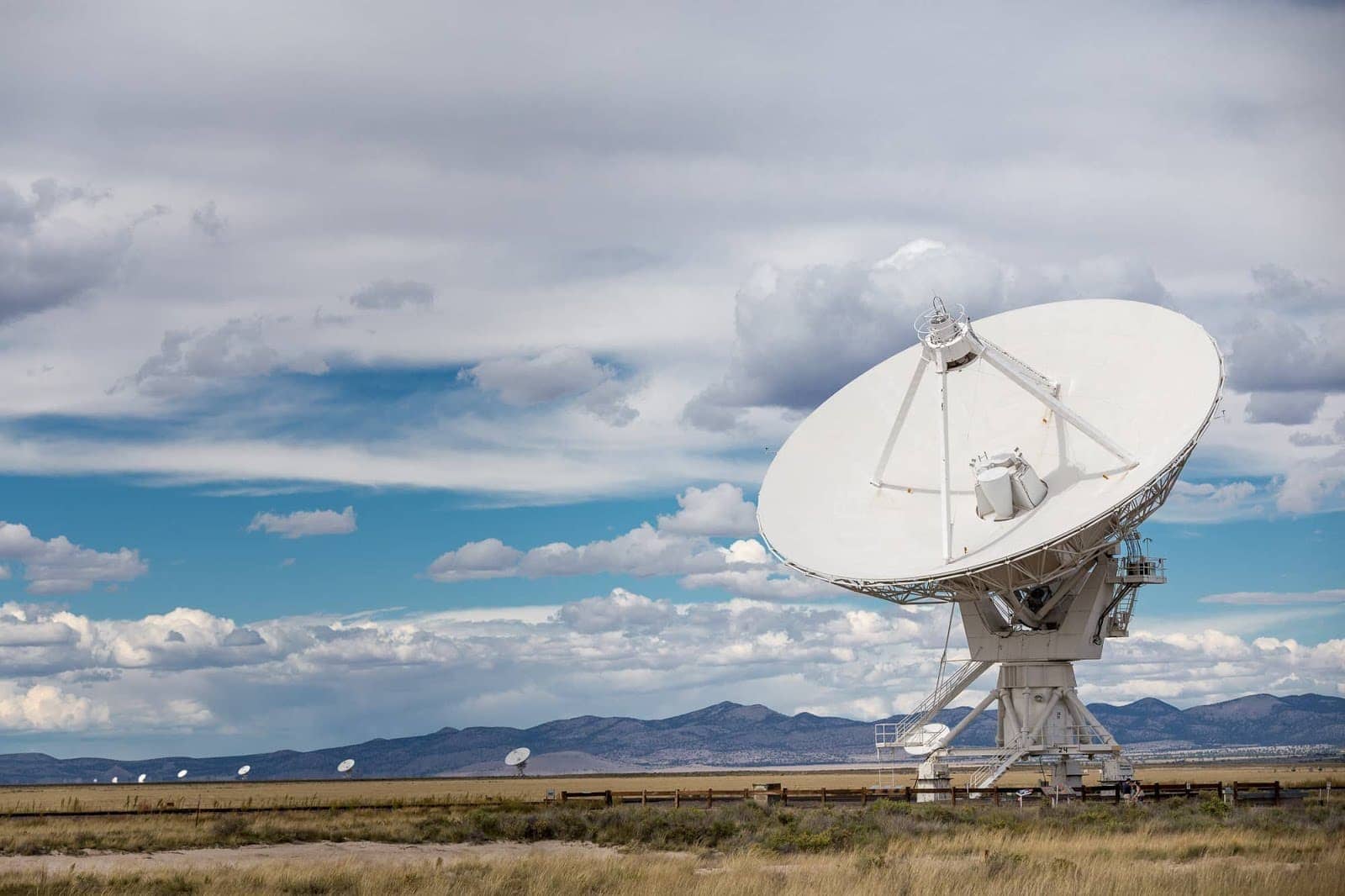
The Very Large Array, USA. Far out in the New Mexico wilderness, the Very Large Array is one of the world’s largest and most impressive radio telescopes. Unlike an optical telescope, which look at visible light waves, a radio telescope looks at radio waves, and from that we can learn all sorts of things from how black holes are formed through to the creation of the universe itself. These radio waves require a very large telescope, which is why the VLA is actually made up of 27 dishes, which work together to capture radio waves. There’s a small visitor centre and self-guided walking trail, and there are guided tours on the first Saturday of the month. See the official website for more details.
Jodrell Bank, UK. If you’re in the UK , then a trip to Jodrell Bank is a good option for viewing impressively large radio telescopes. In fact, Jodrell Bank is home to the world’s third largest steerable radio telescope, as well as a number of other active telescopes. There’s a visitor centre where you can learn all about the telescopes, and all sorts of other space-related things.
The Very Large Telescope, Chile. Way up high in the mountains of Chile is the world’s most advanced visible-light astronomical observatory – the aptly named “ Very Large Telescope ”. Operated by the European Southern Observatory, this is the most impressive optical instrument in the world to date, consisting of four main mirrors that are over eight meters in diameter, as well as four 1.8m diameter mirrors. These work together to create a final image, and the telescope is powerful enough that it would be able to make out a cars headlights on the moon. It’s fairly remote, what with it being on a mountain top in Chile, but you can visit – check here for more information on tours.
Green Bank Observatory, USA – At time of writing, Green Bank Observatory is home to the worlds largest steerable radio telescope, the Green Bank Telescope. Constructed in 2001, it’s one of the newest US telescopes, and with a total collecting area of 2.3 acres, is certainly impressive to behold. You can take a tour of the observatory, and there are also weekly and monthly events at the site.
5. Extra-terrestrial spots
If you’re really desperate to get off planet, you might want to frequent a location which has a history of extra-terrestrial activity such as UFO sightings. Whilst E.T. is yet to make formal contact, who knows, you might get lucky and have the chance to hop on a passing spaceship!
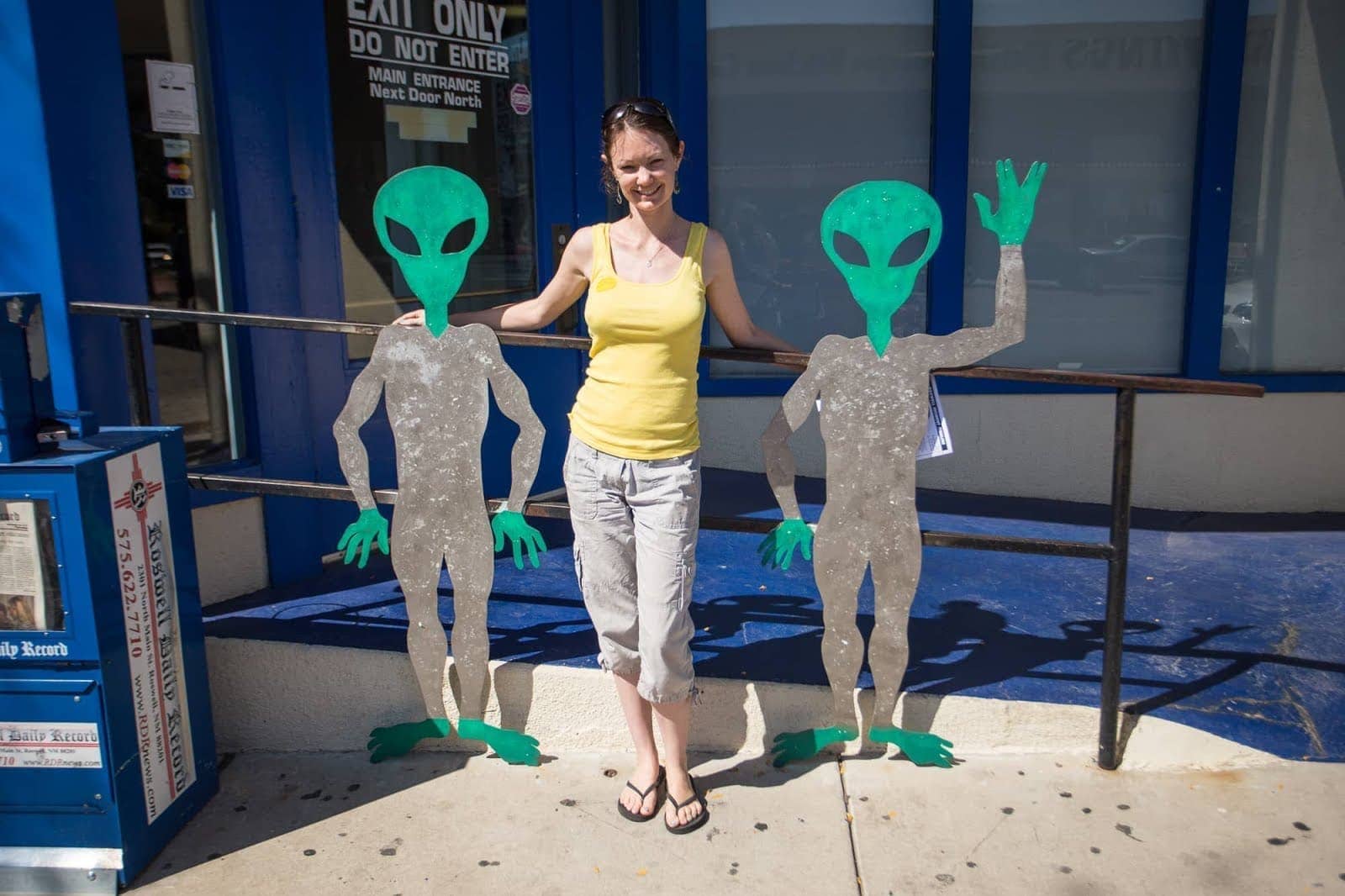
Roswell, USA. If you want to learn about aliens, then the town of Roswell in New Mexico has definitely got to be on your list. It became famous as the alleged site of a huge government cover-up of a supposed alien spaceship crash at a nearby ranch property, and the town has since embraced it’s position as the world’s most famous UFO hotspot. There are a number of alien themed attractions here – we’d recommend visiting the Roswell UFO museum as a good starting point.
El Enladrillado, Chile. Central Chile is well known as a UFO spotting hotzone. So much so in fact, that the country’s national tourism board established a UFO trail, a 30km long designated trail in the Andes mountains that centres around the town of San Clemente. This is definitely a good place to come to spot UFO’s, although the national tourism authority is keen to stress that a sighting isn’t guaranteed.
Nullabor Plain, Australia. When I was travelling in Australia, I had a memorable evening out in the outback on the vast Nullabor Plain with a chap who was convinced he was regularly visited by aliens. He might have been on to something of course, with this region of Australia being particularly famous for UFO sightings. And if you don’t see a UFO, fear not, the star gazing here is pretty epic too!
HR Giger Museum, Switzerland. If you prefer your aliens of the fantastical science fiction type, then a visit to the HR Giger museum in Gruyères, Switzerland, should definitely be on your list. It’s home a large collection of works by Swiss artists HR Giger, who famously created the monsters from the sci-fi classic horror movie Alien (and its sequels). Definitely one for the sci-fi fans.
Further Reading for your Space Trip
Well, that was a lot about space. Hopefully you’ve learnt a bit about your options for getting into space as a tourist, as well as some slightly more cost-effective ways to get your space fix on! Here are a few resources that you might find useful.
- Our favourite sights along the New Mexico Space Trail , USA. Plus a guide to attending the Albuquerque International Balloon Fiesta if you’re in New Mexico.
- Our guide to visiting Jasper National Park for their annual Dark Sky Festival
- A guide to attending Space Camp USA , as well as visiting the U.S Space and Rocket Center
- Official websites for Virgin Galactic , Blue Origin and SpaceX , for when you’ve saved up enough for that ticket to space
- The NASA Instagram feed , for mind blowing space images
- John Glenn’s memoir, to give you an insight into what it was like to be the first American to orbit the earth.
- Chris Hadfield’s book “ An Astronaut’s Guide to Life on Earth ”, helping you understand how to make the impossible a reality, which seems like a good place to end this post!
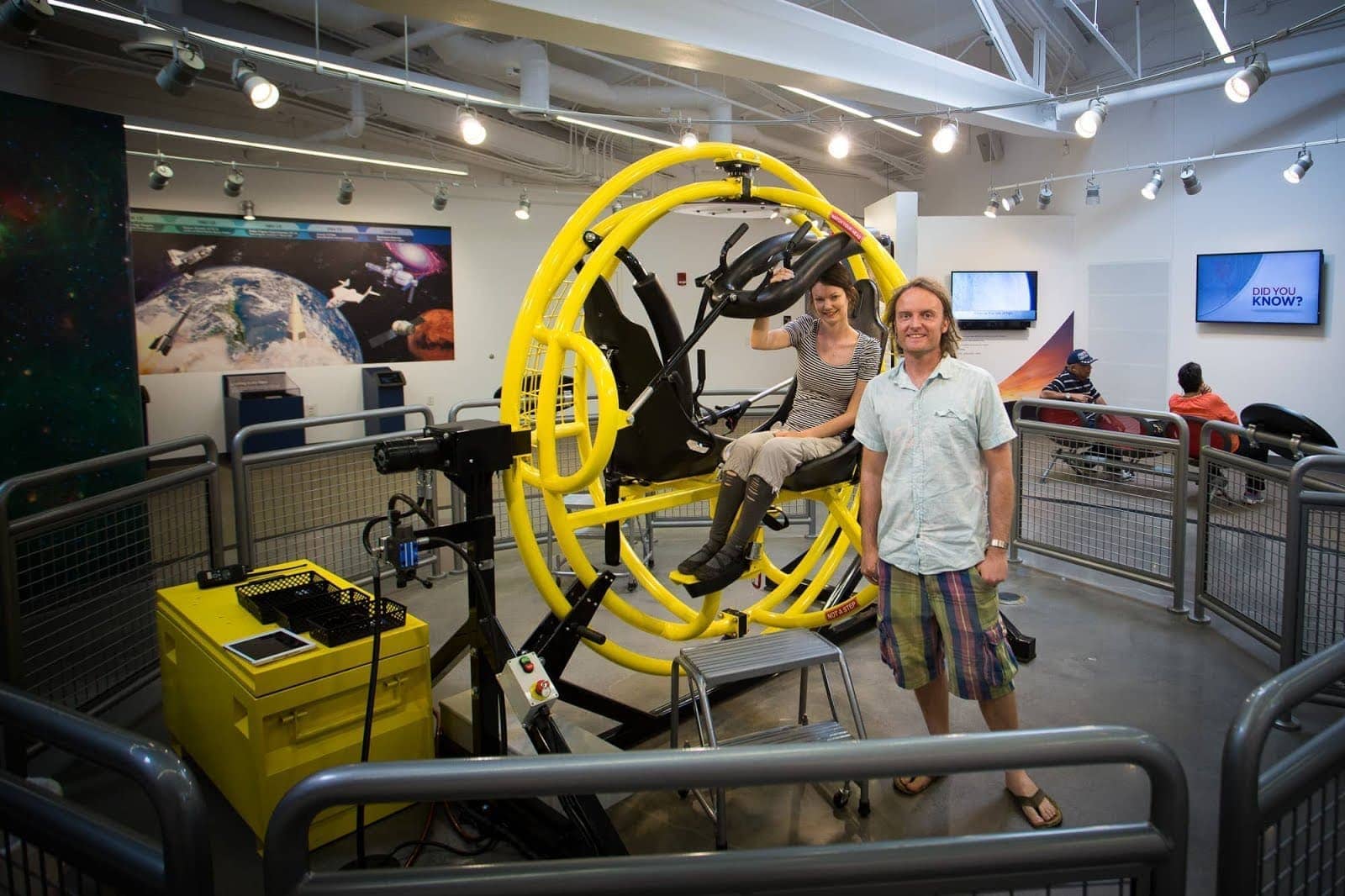
Well, that was a lot to write about space travel and space tourism! We’re not quite there yet, but with the pace of developments I see no reason why, in the coming years and decades, that I won’t finally be able to realise my dream of heading up into space for real. Let me know in the comments if heading into space is a dream of yours!
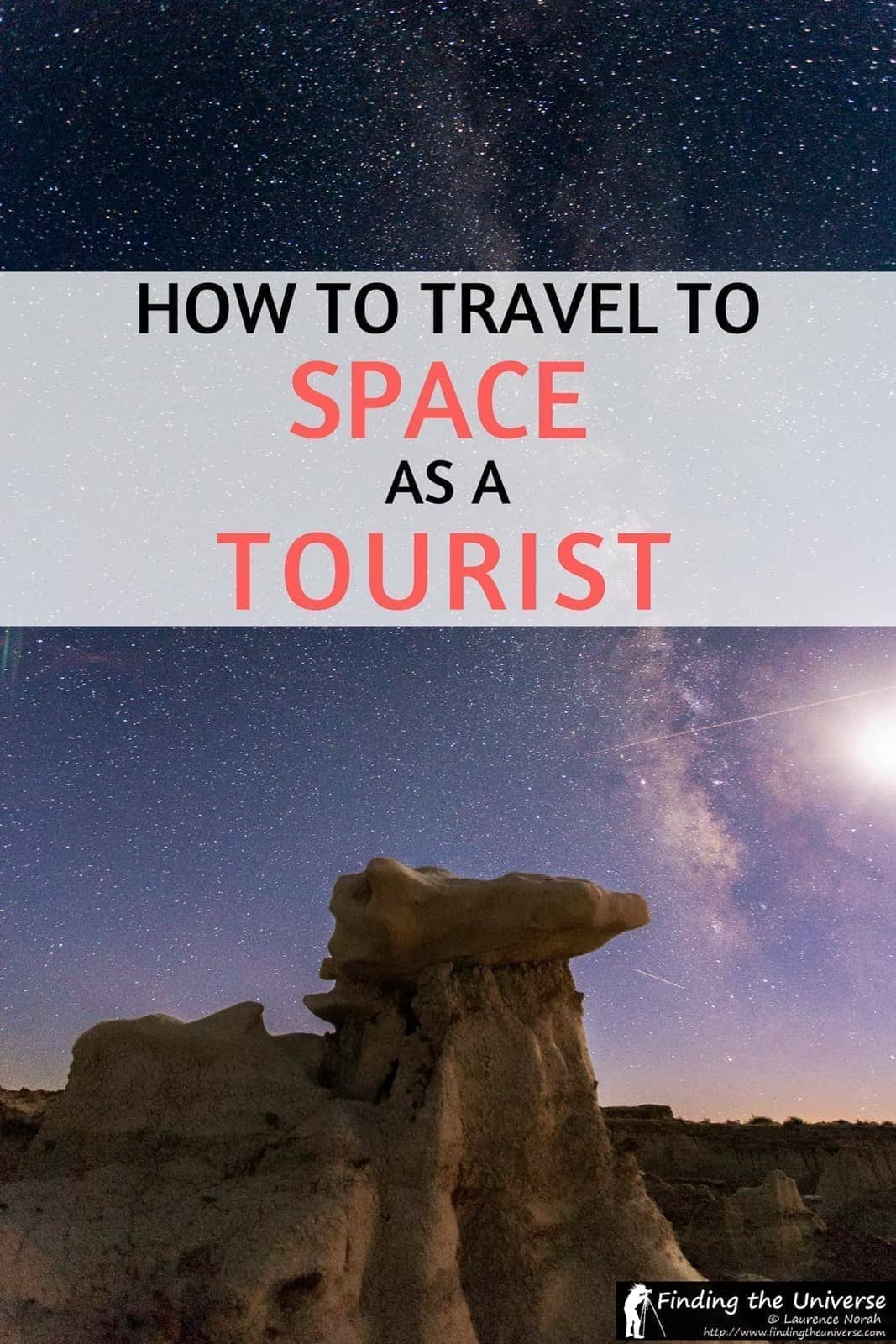
Enjoyed this post? Why not share it!
There are 4 comments on this post
Please scroll to the end to leave a comment
Lynn Magnuson says
17th February 2024 at 8:16 am
Traveling into space is something I’ve wanted to do ever since I was a child. I remember sitting in class and I think it was the third grade and watching Alan Shepard blast off. I knew at that point that someday I wanted to do the same thing. It hasn’t happened yet, but as time goes by the chance to do so, becomes more and more a possibility. I hope someday I do get the chance.
I love your article. Very well written and very informative. Keep up the great writing. That’s another thing I share a passion for. Writing
Laurence Norah says
20th February 2024 at 1:45 am
I’m right there with you! I really hope you get the chance to get into space some day soon. It’s definitely getting closer as a possibility 🙂
Safe travels, be they earthbound or not!
roshmand says
2nd July 2023 at 6:57 pm
amazing poat. thanks
4th July 2023 at 9:39 am
thank you very much 🙂
Leave a Reply Cancel reply
Your email address will not be published. Required fields are marked *
Let me know when there's a reply to my comment (just replies to your comment, no other e-mails, we promise!)
Subscribe to our monthly Newsletter where we share our latest travel news and tips. This also makes you eligible to enter our monthly giveaways!
We only ask for your e-mail so we can verify you are human and if requested notify you of a reply. To do this, we store your data as outlined in our privacy policy . Your e-mail will not be published or used for any other reason other than those outlined above.
We have emailed you a PDF version of the article you requested.
Can't find the email?
Please check your spam or junk folder
You can also add [email protected] to your safe senders list to ensure you never miss a message from us.
How Far From Earth Can Humans Travel Into Space?
Complete the form below and we will email you a PDF version
Cancel and go back
IFLScience needs the contact information you provide to us to contact you about our products and services. You may unsubscribe from these communications at any time.
For information on how to unsubscribe, as well as our privacy practices and commitment to protecting your privacy, check out our Privacy Policy
Complete the form below to listen to the audio version of this article
Advertisement
Sign up today to get weekly science coverage direct to your inbox
© 2024 IFLScience. All Rights Reserved
Newsletters in your inbox!
Subscribe today for our Weekly Newsletter in your inbox!
Dr. Alfredo Carpineti
Senior Staff Writer & Space Correspondent
Alfredo (he/him) has a PhD in Astrophysics on galaxy evolution and a Master's in Quantum Fields and Fundamental Forces.
Book View full profile
Book Read IFLScience Editorial Policy
DOWNLOAD PDF VERSION

Space travel as far we currently understand it is complicated. Fer Gregory/Shutterstock.com
As of 2021, Americans James Lovell, Fred Haise, John Swigert are the three people who have traveled furthest from Earth, during the Apollo 13 mission. When they flew behind the Moon, they were 400,171 kilometers (248,655 miles) from the surface of the Earth. Light takes 1.335 seconds to cover that distance.
Many of us have certainly fantasized about going into the stars, or at least exploring the solar system. The feasibility of doing that safely is still slightly out of reach, but we are certainly striding towards further and further forays away from the comfort and safety of our own planet.
Could we reach other planets? Very likely. How about other stars? Maybe one day. What about the end of the universe? There is actually a way that doesn’t require any science fiction solutions (or at least nothing beyond the physics we know.)
Let’s look at the technologies we need to go further deep into space.
The Moon, Mars, and Beyond
If our goal is to explore the solar system, we have a lot of the technology already. There are powerful rockets already in use, and crewed vehicles are being designed to carry humans back to the Moon and beyond – but there are many concerns.
The further we are away from Earth, the higher dose of cosmic radiation we receive. Our planet’s strong magnetic field shields from a good chunk of that. What’s protecting you when you’re going into deep space? Researchers have actually tested a solution. Fungi discovered in Chernobyl survives on radiation, and this could one day be used as a living shielding system on spacecraft and human habitats.
Journeys also would take many months – if not years – and there is a lot of talks of one-way trips. In general, everywhere else in the solar system is an extremely dangerous environment that can easily kill us. While we might reach it, this doesn’t mean we can thrive there. And remember that most medical interventions in space might be extremely difficult to perform.
There’s also the possibility that alien life exists somewhere nearby, so we need to discuss how our presence there might endanger the potential organisms living beyond Earth.
Ad Astra – To The Stars
If you think that all the challenges of “local” space travel can be solved (let’s believe they can for now), maybe you want to turn your attention towards the stars. Could humanity travel to another star system?
Humanity, maybe. A single human, not really. Let’s take Proxima Centauri, the closest star to the Sun. At the speed of light, it takes just over four years to get there. If we were to achieve the speed of the fastest spacecraft ever ( NASA's Parker Solar Probe in its closest approach to the Sun ) it would take almost 8,400 years to get there. And that’s without slowing down to stop it.
There are proposals to send robotic explorations there. Miniature crafts might get there in just a few decades, and larger nuclear-powered ones could do the journey in a few hundred years. Those are very exciting, but they are not suitable for humans. And even if they were, that’s still beyond the human lifespan.
A solution to this might be a generational ship. The first generation would leave our planet and their descendants would reach the star. Obviously, we should wonder why anyone would start this journey. But It’s equally important to discuss the ethical and psychological state that the in-between generations, these interstellar middle children, might be in. Would they be interested in keep going towards something they would never see?
Getting Close To The Speed Of Light
Can we make it faster? And could we reach nearby galaxies and beyond too? Well, at least in principle yes. What you would need is a relativistic rocket . This would allow a handful of humans to travel incredible distances, and it doesn’t require anything beyond our current understanding of physics.
You need a rocket that is accelerated by about 9.81 meters per second squared. That’s the average Earth-normal pull, so people in the spacecraft would feel like they are simply standing on the surface of our planet. Such an acceleration would quickly bring the spacecraft to relativistic speed and there a very useful phenomenon takes place: time dilation.
Getting close to the speed of light, the passage of time on the spacecraft will slow down. This quirk of physics was popularized in the twin paradox, and in this relativistic rocket, you are the twin that flies away and doesn’t age.
The clock outside would still be ticking. So, you could reach Proxima Centauri in 4.3 years, but on-board it would feel like 3.6 years. If you instead wanted to go Vega (27 light-years away), on board, it would feel like 6.6. The further you go the closer you’d be to the speed of light, and the slower time will pass.
Journey to the edge of the universe
So you could get to the center of the Milky Way in 20 years or to the Andromeda Galaxy – located over two million light-years away – in a merely 28. Obviously, two million years would have passed on Earth.
But there is a limit to how far we could go? Yes. The universe is expanding and this expansion is accelerated. The space between galaxies (unless they are very close) gets wider and wider with every passing second. And the further two things are in the universe the faster they appear to recede from each other.
There are galaxies that we see in the sky that we can no longer reach because the only way to do so would be to move faster than the speed of light to make up for the accelerated expansion of the universe. This border is called the cosmological horizon, and its exact size depends on the correct cosmological formula to describe the universe… which is currently a work in progress .
Still, it could be possible to reach this boundary in a few decades. An empty, cold, and unmarked border in the universe. So why don’t we have such a rocket? Well, fuel is the reason. To sustain such a constant acceleration requires a huge amount of fuel. Even imagining an extremely efficient reaction (that we don’t have), you ought to carry a lot of fuel with you. Like, a planet-size worth of fuel.
The moral of the story is that space travel as far we currently understand it is complicated. We have so many challenges to deal with, whether they are technical, physical, physiological, psychological, and ethical. How we approach them could make all the difference.
THIS WEEK IN IFLSCIENCE
Article posted in, more space and physics stories.

The Incredibly Stupid Conspiracy Theory That The Solar System Has Two Suns

Newly Spotted Complex Molecule Is Among The Largest Ever Discovered Outside The Solar System

Why Did Pluto's Atmosphere Continue To Expand As It Moved Away From The Sun?

Was Amelia Earhart Eaten By Giant Crabs?

Why Is The Dead Sea So Salty?

Does The Word "Avocado" Have A Double Meaning?
NASA’s Voyager 1 Resumes Sending Engineering Updates to Earth

NASA’s Voyager 1 spacecraft is depicted in this artist’s concept traveling through interstellar space, or the space between stars, which it entered in 2012.
After some inventive sleuthing, the mission team can — for the first time in five months — check the health and status of the most distant human-made object in existence.
For the first time since November , NASA’s Voyager 1 spacecraft is returning usable data about the health and status of its onboard engineering systems. The next step is to enable the spacecraft to begin returning science data again. The probe and its twin, Voyager 2, are the only spacecraft to ever fly in interstellar space (the space between stars).
Voyager 1 stopped sending readable science and engineering data back to Earth on Nov. 14, 2023, even though mission controllers could tell the spacecraft was still receiving their commands and otherwise operating normally. In March, the Voyager engineering team at NASA’s Jet Propulsion Laboratory in Southern California confirmed that the issue was tied to one of the spacecraft’s three onboard computers, called the flight data subsystem (FDS). The FDS is responsible for packaging the science and engineering data before it’s sent to Earth.

After receiving data about the health and status of Voyager 1 for the first time in five months, members of the Voyager flight team celebrate in a conference room at NASA’s Jet Propulsion Laboratory on April 20.
The team discovered that a single chip responsible for storing a portion of the FDS memory — including some of the FDS computer’s software code — isn’t working. The loss of that code rendered the science and engineering data unusable. Unable to repair the chip, the team decided to place the affected code elsewhere in the FDS memory. But no single location is large enough to hold the section of code in its entirety.
So they devised a plan to divide the affected code into sections and store those sections in different places in the FDS. To make this plan work, they also needed to adjust those code sections to ensure, for example, that they all still function as a whole. Any references to the location of that code in other parts of the FDS memory needed to be updated as well.
The team started by singling out the code responsible for packaging the spacecraft’s engineering data. They sent it to its new location in the FDS memory on April 18. A radio signal takes about 22 ½ hours to reach Voyager 1, which is over 15 billion miles (24 billion kilometers) from Earth, and another 22 ½ hours for a signal to come back to Earth. When the mission flight team heard back from the spacecraft on April 20, they saw that the modification worked: For the first time in five months, they have been able to check the health and status of the spacecraft.
Get the Latest News from the Final Frontier
During the coming weeks, the team will relocate and adjust the other affected portions of the FDS software. These include the portions that will start returning science data.
Voyager 2 continues to operate normally. Launched over 46 years ago , the twin Voyager spacecraft are the longest-running and most distant spacecraft in history. Before the start of their interstellar exploration, both probes flew by Saturn and Jupiter, and Voyager 2 flew by Uranus and Neptune.
Caltech in Pasadena, California, manages JPL for NASA.
News Media Contact
Calla Cofield
Jet Propulsion Laboratory, Pasadena, Calif.
626-808-2469
clock This article was published more than 1 year ago
How to travel to space, Earth’s hottest new destination
Go boldly, but pack lightly.
The space just above our planet is booming . Off-world trips are rapidly increasing: 42 of the 51 commercial astronauts recognized by the Federal Aviation Administration left Earth within the past two years.
The FAA predicts their ranks will balloon in the next decade — which may also bring new destinations, such as a rotating space hotel whose construction, planners claim, will begin in 2026 — and some experts have expressed optimism that relatively affordable space travel could be possible by the middle of this century.
For now, though, costs remain enormous. A $450,000 ticket reserves a spot on Virgin Galactic’s space plane, which flies 50 miles above Earth — six times a passenger plane’s cruising altitude. Expect to pay even more to go higher. Blue Origin’s 11-minute journey by rocket, which reportedly cost more than $1 million, shoots above the 62-miles-high Kármán line, the generally agreed-upon boundary between Earth and space. Others spend days in space. In September 2021, four civilian Americans orbited for three days aboard a SpaceX Dragon capsule. No word on how much it cost them.
For $55 million , Axiom Space will send astronauts via a SpaceX rocket to the International Space Station, a laboratory that circles Earth once every 90 minutes. For two weeks last April, the ISS’s first Axiom crew members worked in the lab while forgoing proper showers.
The New Space Age
Space “ought to be on everybody’s bucket list,” said former NASA astronaut Michael López-Alegría , the Axiom Space vice president who commanded the April mission. “We’d be the first to admit that it’s not quite democratic yet, because it’s still pretty expensive, but we’ll get there.” The Houston-based company has already begun to build a segment of what will be a private space station.
Here’s how to pack and prep for Earth’s hottest new destination.
Getting ready
Training takes days to months. Axiom Space crew members spent at least 700 hours learning new tasks: how to run experiments, dock a transport vehicle to the ISS and respond to fires.
They also practiced on a centrifuge, the rapidly spinning machine that simulates the extreme acceleration of space travel. You don’t need to be in tiptop shape — floating in microgravity is effortless, López-Alegría said — but you will have to endure intense G-force as you exit and reenter the atmosphere.
You should be mentally prepared for a unique psychological experience called the overview effect , which occurs when people witness their home planet from above. “When we came back to Earth, I could not stop crying,” said aerospace PhD student Sara Sabry, founder of the Deep Space Initiative , who traveled to space last August via Blue Origin (whose founder, Jeff Bezos, owns The Washington Post).
Aboard SpaceX, you’ll wear spacesuits: sleek, pressurized white outfits with black-visored helmets. On Virgin Galactic and Blue Origin flights, the fit is closer to a jet pilot’s, with gear that’s not designed for loss of pressure. Sabry said her suit was comfy and custom-tailored. Under Armour makes the clothes — underwear, jumpsuit and zip-up boots — for Virgin Galactic, which founder Richard Branson wore in his July 2021 journey to space’s edge.
Going boldly, packing lightly
Space may be the one place you can fly without packing an ID or passport . “When we walk onto the vehicle, we’re wearing our spacesuits and pretty much nothing else,” López-Alegría said.
Expect to leave the rest of your worldly possessions on Earth, with a few exceptions. Sabry packed three pounds of mementos in a bag, including photographs and a single dirty sock belonging to her niece. On Inspiration4, the Earth-orbiting SpaceX mission, one astronaut brought his ukulele to serenade his teammates in the capsule.
Snapping selfies
Don’t plan on filling your Instagram feed with your space travels to make your friends jealous. You won’t have your phone.
On Sabry’s Blue Origin flight, a few people had a GoPro strapped to their wrists to capture video — especially of the three minutes of weightlessness.
The ISS provides cameras to use. Astronauts can browse the internet on the space station, but posting requires help. Pictures snapped in space are beamed to Earth, López-Alegría said, where someone on the ground uploads them to social media.
Eating and drinking
There wasn’t any snacking on the Blue Origin craft, Sabry said, and the up-and-down trips don’t leave time for in-flight meals. Hot food isn’t always an option with other carriers, either. The first course served on the orbiting Dragon capsule was cold pizza, though SpaceX founder Elon Musk apologized for the unheated pie and promised future astronauts would have a food warmer.
Why NASA and other space agencies want to return to the moon
That’s how the crew heats dinner on the ISS, which boasts a varied menu: about 200 options , mostly freeze-dried or thermostabilized. Tortillas replace bread to avoid crumbs; what’s just a tabletop mess on Earth becomes a hazard when bits can float into electronics or eyeballs. There’s no soda or beer because, according to NASA, carbonation bubbles would be unpleasantly routed through the digestive system without gravity to help an astronaut burp.
Staying clean-ish
Space is like backcountry camping. Both lack laundry machines and require some hygienic compromises. When astronauts must bathe, they squeeze packets of soap and water on their skin and apply rinseless shampoo to their hair. Toilets on the ISS and Dragon Capsule collect waste via suction hoses and fans. On the space station, urine is recycled into drinkable water . Toothbrushes and paste are the same, but without sinks, there’s no spitting.
Falling asleep
You’ll roll out sleeping bags in the SpaceX spacecraft or as an Axiom crew member on the ISS. Vehicles are temperature-regulated because the outside of the ISS can swing from minus-250 in the shadows to 250 degrees in the sun. Still, some modules, or sections, of the ISS can be chillier than others: López-Alegría said he donned long underwear to be cozier when drifting off in space.
Illustrations by Elizabeth von Oehsen. Editing by Amanda Finnegan.


Is Time Travel Possible?
We all travel in time! We travel one year in time between birthdays, for example. And we are all traveling in time at approximately the same speed: 1 second per second.
We typically experience time at one second per second. Credit: NASA/JPL-Caltech
NASA's space telescopes also give us a way to look back in time. Telescopes help us see stars and galaxies that are very far away . It takes a long time for the light from faraway galaxies to reach us. So, when we look into the sky with a telescope, we are seeing what those stars and galaxies looked like a very long time ago.
However, when we think of the phrase "time travel," we are usually thinking of traveling faster than 1 second per second. That kind of time travel sounds like something you'd only see in movies or science fiction books. Could it be real? Science says yes!

This image from the Hubble Space Telescope shows galaxies that are very far away as they existed a very long time ago. Credit: NASA, ESA and R. Thompson (Univ. Arizona)

How do we know that time travel is possible?
More than 100 years ago, a famous scientist named Albert Einstein came up with an idea about how time works. He called it relativity. This theory says that time and space are linked together. Einstein also said our universe has a speed limit: nothing can travel faster than the speed of light (186,000 miles per second).
Einstein's theory of relativity says that space and time are linked together. Credit: NASA/JPL-Caltech
What does this mean for time travel? Well, according to this theory, the faster you travel, the slower you experience time. Scientists have done some experiments to show that this is true.
For example, there was an experiment that used two clocks set to the exact same time. One clock stayed on Earth, while the other flew in an airplane (going in the same direction Earth rotates).
After the airplane flew around the world, scientists compared the two clocks. The clock on the fast-moving airplane was slightly behind the clock on the ground. So, the clock on the airplane was traveling slightly slower in time than 1 second per second.
Credit: NASA/JPL-Caltech
Can we use time travel in everyday life?
We can't use a time machine to travel hundreds of years into the past or future. That kind of time travel only happens in books and movies. But the math of time travel does affect the things we use every day.
For example, we use GPS satellites to help us figure out how to get to new places. (Check out our video about how GPS satellites work .) NASA scientists also use a high-accuracy version of GPS to keep track of where satellites are in space. But did you know that GPS relies on time-travel calculations to help you get around town?
GPS satellites orbit around Earth very quickly at about 8,700 miles (14,000 kilometers) per hour. This slows down GPS satellite clocks by a small fraction of a second (similar to the airplane example above).

GPS satellites orbit around Earth at about 8,700 miles (14,000 kilometers) per hour. Credit: GPS.gov
However, the satellites are also orbiting Earth about 12,550 miles (20,200 km) above the surface. This actually speeds up GPS satellite clocks by a slighter larger fraction of a second.
Here's how: Einstein's theory also says that gravity curves space and time, causing the passage of time to slow down. High up where the satellites orbit, Earth's gravity is much weaker. This causes the clocks on GPS satellites to run faster than clocks on the ground.
The combined result is that the clocks on GPS satellites experience time at a rate slightly faster than 1 second per second. Luckily, scientists can use math to correct these differences in time.

If scientists didn't correct the GPS clocks, there would be big problems. GPS satellites wouldn't be able to correctly calculate their position or yours. The errors would add up to a few miles each day, which is a big deal. GPS maps might think your home is nowhere near where it actually is!
In Summary:
Yes, time travel is indeed a real thing. But it's not quite what you've probably seen in the movies. Under certain conditions, it is possible to experience time passing at a different rate than 1 second per second. And there are important reasons why we need to understand this real-world form of time travel.
If you liked this, you may like:

RocketStar Inc's Breakthrough in Space Travel: The Nuclear Fusion Drive
I n the realm of space exploration and satellite deployment, propulsion technology is the linchpin to achieving ever-greater milestones. Imagine a spacecraft that harnesses the power of nuclear fusion, an energy source that mimics the processes powering our own sun, to journey through the cosmos. This isn’t a scene from a science fiction novel; it’s the current breakthrough from RocketStar Inc. with their unveiling of the FireStar Drive—the world’s first electric propulsion system bolstered by nuclear fusion.
RocketStar’s technological marvel, the FireStar Drive, marks a significant advance from traditional chemical and electric propulsion methods. By employing a fusion-enhanced pulsed plasma thruster that ionizes water vapor to generate high-speed protons, which then induce fusion reactions with boron nuclei, this system can increase the base propulsion unit’s thrust by an impressive 50%. The fusion process, likened to an afterburner in a jet engine, injects boron into the thruster’s exhaust, creating a fusion-fission reaction that supercharges the engine’s capabilities.
The genesis of this innovation was a collaborative project for AFWERX—an Air Force Work Project—during which the concept of introducing boronated water into a pulsed plasma thruster’s exhaust was first realized. Not only did this produce alpha particles and gamma rays—indicators of nuclear fusion—but subsequent testing at Georgia Tech’s High Power Electric Propulsion Laboratory showcased a significant performance boost, confirming the potential of this groundbreaking propulsion technology.
Adam Hecht, Professor of Nuclear Engineering at the University of New Mexico, highlighted the paradigm shift this represents: “RocketStar has not just incrementally improved a propulsion system, but taken a leap forward by applying a novel concept, creating a fusion-fission reaction in the exhaust.”
This propulsion system is not a distant possibility—it’s swiftly approaching operational status. RocketStar is already prepping the M1.5 thruster, the current iteration of their technology, for in-space performance evaluation aboard D-Orbit’s OTV ION Satellite Carrier on SpaceX Transporter missions in July and October this year.
“The M1.5 is not just a step toward the future—it’s a giant leap,” said Matteo Lorenzoni, Head of Sales at D-Orbit. “We are very happy to have the opportunity to work alongside RocketStar and contribute to the demonstration of the M1.5. We just integrated the thruster onto the ION Satellite Carrier, and look forward to witnessing its performance in orbit.”
Additionally, February 2025 will see an in-space demonstration of the FireStar Drive as a hosted payload on Rogue Space System’s Barry-2 spacecraft. Brent Abbott, CRO at Rogue Space Systems, stated, “We are very excited to test FireStar for RocketStar. We look forward to considering it for future Rogue missions.”
RocketStar is not stopping at propulsion. Their ambitious vision encompasses a suite of cutting-edge technologies, from aerospike rocket engines to digital signal processing (DSP) systems that enable advanced space communications and radar capabilities.
As space agencies and commercial entities push further into the final frontier, RocketStar’s FireStar Drive promises to be a key component in overcoming the challenges of deep space travel. Its inception, sparked by a simple conference doodle and nurtured through innovative collaboration, is now set to propel the industry forward, reminding us that sometimes, the most profound advancements start with the simplest ideas.
Relevant articles:
– World’s 1st nuclear fusion-powered electric propulsion drive unveiled
– RocketStar tests fusion-enhanced in-space propulsion process , Aerospace Testing International, Fri, 22 Mar 2024 10:25:44 GMT
– enhanced electric thruster for spacecraft , Space Daily, Thu, 21 Mar 2024 10:35:35 GMT
– RocketStar Announces Successful Demonstration of Fusion-Enhanced Pulsed Plasma Electric Propulsion , GlobeNewswire, Wed, 20 Mar 2024 16:31:20 GMT
![In the realm of space exploration and satellite deployment, propulsion technology is the linchpin to achieving ever-greater milestones. Imagine a spacecraft that harnesses the power of nuclear fusion, an energy source that mimics the processes powering our own sun, to journey through the cosmos. This isn’t a scene from a science fiction novel; it’s the […] In the realm of space exploration and satellite deployment, propulsion technology is the linchpin to achieving ever-greater milestones. Imagine a spacecraft that harnesses the power of nuclear fusion, an energy source that mimics the processes powering our own sun, to journey through the cosmos. This isn’t a scene from a science fiction novel; it’s the […]](https://img-s-msn-com.akamaized.net/tenant/amp/entityid/AA1nNskR.img?w=768&h=512&m=6)

- Politics & Social Sciences
- Social Sciences

Enjoy fast, free delivery, exclusive deals, and award-winning movies & TV shows with Prime Try Prime and start saving today with fast, free delivery
Amazon Prime includes:
Fast, FREE Delivery is available to Prime members. To join, select "Try Amazon Prime and start saving today with Fast, FREE Delivery" below the Add to Cart button.
- Cardmembers earn 5% Back at Amazon.com with a Prime Credit Card.
- Unlimited Free Two-Day Delivery
- Streaming of thousands of movies and TV shows with limited ads on Prime Video.
- A Kindle book to borrow for free each month - with no due dates
- Listen to over 2 million songs and hundreds of playlists
- Unlimited photo storage with anywhere access
Important: Your credit card will NOT be charged when you start your free trial or if you cancel during the trial period. If you're happy with Amazon Prime, do nothing. At the end of the free trial, your membership will automatically upgrade to a monthly membership.
Buy new: .savingPriceOverride { color:#CC0C39!important; font-weight: 300!important; } .reinventMobileHeaderPrice { font-weight: 400; } #apex_offerDisplay_mobile_feature_div .reinventPriceSavingsPercentageMargin, #apex_offerDisplay_mobile_feature_div .reinventPricePriceToPayMargin { margin-right: 4px; } -24% $44.07 $ 44 . 07 FREE delivery Monday, May 6 Ships from: Amazon.com Sold by: Amazon.com
Return this item for free.
Free returns are available for the shipping address you chose. You can return the item for any reason in new and unused condition: no shipping charges
- Go to your orders and start the return
- Select the return method
Save with Used - Very Good .savingPriceOverride { color:#CC0C39!important; font-weight: 300!important; } .reinventMobileHeaderPrice { font-weight: 400; } #apex_offerDisplay_mobile_feature_div .reinventPriceSavingsPercentageMargin, #apex_offerDisplay_mobile_feature_div .reinventPricePriceToPayMargin { margin-right: 4px; } $38.18 $ 38 . 18 FREE delivery May 7 - 13 Ships from: ThriftBooks-Phoenix Sold by: ThriftBooks-Phoenix

Download the free Kindle app and start reading Kindle books instantly on your smartphone, tablet, or computer - no Kindle device required .
Read instantly on your browser with Kindle for Web.
Using your mobile phone camera - scan the code below and download the Kindle app.

Image Unavailable

- To view this video download Flash Player
Follow the author

Traveller in Space: Gender, Identity and Tibetan Buddhism Paperback – June 18, 2002
Purchase options and add-ons.
In this revised edition of June Campbell's ground-breaking and ambitious work, many of the key issues concerning gender, identity and Tibetan Buddhism, are now broadened and further clarified in order to create a better understanding of the historical importance of gender symbolisation in the very construction of religious belief and philosophy. With its cross-cultural stance, the book concerns itself with the unusual task of creating links between the symbolic representations of gender in the philosophy of Tibetan Buddhism, and contemporary western thinking in relation to identity politics and intersubjectivity. A wide range of sources are drawn upon in order to build up arguments concerning the complexities of individual gender roles in Tibetan society, alongside the symbolic spaces allocated to the male and female within its cultural forms, including its sacred institutions, its representations and in the enactment of ritual. And in the light of Tibetan Buddhisms popularity in the west, timely questions are raised concerning gender and the potential uses and abuses of power and secrecy in Tibetan Tantra, which, with its unique emphasis on guru-devotion and sexual ritual, is now being disseminated worldwide. What is made clear in this new edition, however, is that Campbell's ultimate aim is to elucidate, through the use of a psychoanalytical perspective, something of the dynamic inter-relationship between the inner lives of individuals, their gender identities in society, and the belief systems which they create in order to provide cohesion, continuity and meaning, whether it be in the east or the west.
- Print length 256 pages
- Language English
- Publisher Continuum
- Publication date June 18, 2002
- Dimensions 5.5 x 0.54 x 8.5 inches
- ISBN-10 0826457193
- ISBN-13 978-0826457196
- See all details

Customers who bought this item also bought

Editorial Reviews
About the author, product details.
- Publisher : Continuum; Revised edition (June 18, 2002)
- Language : English
- Paperback : 256 pages
- ISBN-10 : 0826457193
- ISBN-13 : 978-0826457196
- Item Weight : 10.7 ounces
- Dimensions : 5.5 x 0.54 x 8.5 inches
- #137 in Tibet Travel Guides
- #2,282 in Tibetan Buddhism (Books)
- #6,314 in General Gender Studies
About the author
June campbell.
Discover more of the author’s books, see similar authors, read author blogs and more
Customer reviews
Customer Reviews, including Product Star Ratings help customers to learn more about the product and decide whether it is the right product for them.
To calculate the overall star rating and percentage breakdown by star, we don’t use a simple average. Instead, our system considers things like how recent a review is and if the reviewer bought the item on Amazon. It also analyzed reviews to verify trustworthiness.
- Sort reviews by Top reviews Most recent Top reviews
Top reviews from the United States
There was a problem filtering reviews right now. please try again later..
Top reviews from other countries
- Amazon Newsletter
- About Amazon
- Accessibility
- Sustainability
- Press Center
- Investor Relations
- Amazon Devices
- Amazon Science
- Sell on Amazon
- Sell apps on Amazon
- Supply to Amazon
- Protect & Build Your Brand
- Become an Affiliate
- Become a Delivery Driver
- Start a Package Delivery Business
- Advertise Your Products
- Self-Publish with Us
- Become an Amazon Hub Partner
- › See More Ways to Make Money
- Amazon Visa
- Amazon Store Card
- Amazon Secured Card
- Amazon Business Card
- Shop with Points
- Credit Card Marketplace
- Reload Your Balance
- Amazon Currency Converter
- Your Account
- Your Orders
- Shipping Rates & Policies
- Amazon Prime
- Returns & Replacements
- Manage Your Content and Devices
- Recalls and Product Safety Alerts
- Conditions of Use
- Privacy Notice
- Consumer Health Data Privacy Disclosure
- Your Ads Privacy Choices
NASA's Voyager 1 spacecraft finally phones home after 5 months of no contact
On Saturday, April 5, Voyager 1 finally "phoned home" and updated its NASA operating team about its health.

NASA's interstellar explorer Voyager 1 is finally communicating with ground control in an understandable way again. On Saturday (April 20), Voyager 1 updated ground control about its health status for the first time in 5 months. While the Voyager 1 spacecraft still isn't sending valid science data back to Earth, it is now returning usable information about the health and operating status of its onboard engineering systems.
Thirty-five years after its launch in 1977, Voyager 1 became the first human-made object to leave the solar system and enter interstellar space . It was followed out of our cosmic quarters by its space-faring sibling, Voyager 2 , six years later in 2018. Voyager 2, thankfully, is still operational and communicating well with Earth.
The two spacecraft remain the only human-made objects exploring space beyond the influence of the sun. However, on Nov. 14, 2023, after 11 years of exploring interstellar space and while sitting a staggering 15 billion miles (24 billion kilometers) from Earth, Voyager 1's binary code — computer language composed of 0s and 1s that it uses to communicate with its flight team at NASA — stopped making sense.
Related: We finally know why NASA's Voyager 1 spacecraft stopped communicating — scientists are working on a fix
In March, NASA's Voyager 1 operating team sent a digital "poke" to the spacecraft, prompting its flight data subsystem (FDS) to send a full memory readout back home.
This memory dump revealed to scientists and engineers that the "glitch" is the result of a corrupted code contained on a single chip representing around 3% of the FDS memory. The loss of this code rendered Voyager 1's science and engineering data unusable.

The NASA team can't physically repair or replace this chip, of course, but what they can do is remotely place the affected code elsewhere in the FDS memory. Though no single section of the memory is large enough to hold this code entirely, the team can slice it into sections and store these chunks separately. To do this, they will also have to adjust the relevant storage sections to ensure the addition of this corrupted code won't cause those areas to stop operating individually, or working together as a whole. In addition to this, NASA staff will also have to ensure any references to the corrupted code's location are updated.
Get the Space.com Newsletter
Breaking space news, the latest updates on rocket launches, skywatching events and more!
— Voyager 2: An iconic spacecraft that's still exploring 45 years on
— NASA's interstellar Voyager probes get software updates beamed from 12 billion miles away
— NASA Voyager 2 spacecraft extends its interstellar science mission for 3 more years
On April 18, 2024, the team began sending the code to its new location in the FDS memory. This was a painstaking process, as a radio signal takes 22.5 hours to traverse the distance between Earth and Voyager 1, and it then takes another 22.5 hours to get a signal back from the craft.
By Saturday (April 20), however, the team confirmed their modification had worked. For the first time in five months, the scientists were able to communicate with Voyager 1 and check its health. Over the next few weeks, the team will work on adjusting the rest of the FDS software and aim to recover the regions of the system that are responsible for packaging and returning vital science data from beyond the limits of the solar system.
Join our Space Forums to keep talking space on the latest missions, night sky and more! And if you have a news tip, correction or comment, let us know at: [email protected].

Robert Lea is a science journalist in the U.K. whose articles have been published in Physics World, New Scientist, Astronomy Magazine, All About Space, Newsweek and ZME Science. He also writes about science communication for Elsevier and the European Journal of Physics. Rob holds a bachelor of science degree in physics and astronomy from the U.K.’s Open University. Follow him on Twitter @sciencef1rst.
Hubble Space Telescope pauses science due to gyroscope issue
Mars exploration, new rockets and more: Interview with ESA chief Josef Aschbacher
'Flash Gordon' returns to escape from a prison planet in new comic series
- Robb62 'V'ger must contact the creator. Reply
- Holy HannaH! Couldn't help but think that "repair" sounded extremely similar to the mechanics of DNA and the evolution of life. Reply
- Torbjorn Larsson *Applause* indeed, thanks to the Voyager teams for the hard work! Reply
- SpaceSpinner I notice that the article says that it has been in space for 35 years. Either I have gone back in time 10 years, or their AI is off by 10 years. V-*ger has been captured! Reply
Admin said: On Saturday, April 5, Voyager 1 finally "phoned home" and updated its NASA operating team about its health. The interstellar explorer is back in touch after five months of sending back nonsense data. NASA's Voyager 1 spacecraft finally phones home after 5 months of no contact : Read more
evw said: I'm incredibly grateful for the persistence and dedication of the Voyagers' teams and for the amazing accomplishments that have kept these two spacecrafts operational so many years beyond their expected lifetimes. V-1 was launched when I was 25 years young; I was nearly delirious with joy. Exploring the physical universe captivated my attention while I was in elementary school and has kept me mesmerized since. I'm very emotional writing this note, thinking about what amounts to a miracle of technology and longevity in my eyes. BRAVO!!! THANK YOU EVERYONE PAST & PRESENT!!!
- EBairead I presume it's Fortran. Well done all. Reply
SpaceSpinner said: I notice that the article says that it has been in space for 35 years. Either I have gone back in time 10 years, or their AI is off by 10 years. V-*ger has been captured!
EBairead said: I presume it's Fortran. Well done all.
- View All 13 Comments
Most Popular
- 2 Private moon lander will carry Nokia's 4G cell network to the lunar surface this year
- 3 Hubble Space Telescope pauses science due to gyroscope issue
- 4 'Traffic jams' in the hearts of galaxies can force black holes to collide
- 5 'Cat nights' are here as Leo, Leo minor, and Lynx constellations prowl the evening sky
Screen Rant
Starfield’s shattered space dlc can fix the game’s most annoying issue.
Starfield's upcoming Shattered Space DLC has the opportunity to avoid the game's most annoying issue by being a smaller, more condensed story.
- Shattered Space DLC for Starfield promises new story content, locations, gear, and more this year.
- Shattered Space should focus on smaller, hand-crafted locations in a single star system to reduce reliance on fast travel in the game.
- Speculation suggests Shattered Space will delve into House Va'ruun backstory, possibly in a new star system, enhancing player immersion.
Not much has been revealed about the specifics of Starfield 's upcoming Shattered Space DLC, but Bethesda has confirmed it will launch sometime this year and will bring new story content, locations, gear, and more to the game. With this, it also has the opportunity to avoid the game's most annoying issue by also being a smaller, more condensed story than that of the main game.
Starfield gave players the opportunity to explore over 1000 planets across 100 Star Systems, with the sheer scale of the game being a major selling point prior to its launch. Unfortunately, in practice, this scale didn't always work in the game's favor, with many players complaining that while the Settled Systems were impressive in their scale, and the story locations were well crafted by Bethesda, most of the procedurally generated planets were largely empty. The game also required fast travel to get to any objectives at a pace that didn't slow down the story too much, as manually traveling between planets took far too long and involved moving through the same kind of dead space at a seemingly slow speed, regardless of how much power was being allocated to engines or boosts.
10 Starfield Updates That Need To Happen Before The Shattered Space DLC
Shattered space needs to have a smaller scale, and a reduced reliance on fast travel.
While Starfield , as with many Bethesda games, offered plenty of side activities and quests for players to partake in outside of the main campaign, Shattered Space would benefit from being a more pared-down affair. Setting its story between a smaller number of hand-crafted locations rather than adding more procedurally generated ones would reduce how much fast travel is required and would keep up the pacing of the story , as currently, jumping out of gameplay to scroll through the Star Map to select a planet three or four systems away (which sometimes involves doing a fast travel jump three of four times depending on a ship's build and resources) does tend to kill the sense of exploration and take players out of the game, breaking any sense of immersion, especially when the fast travel itself involves a load screen, rather than the seemingly instant load speeds seen in other modern games involving such a mechanic like Marvel's Spider-Man 2 .
As many Starfield players have likely already finished its main story and would have spent months exploring what the base game has to offer by the time the DLC arrives, Shattered Space should focus almost entirely on the new locations, rather than sending players back and forth to pre-explored locations such as New Atlantis, Neon, or Akila City. This will further immersion by letting players truly dive into a handful of new planets and learn more about their citizens, rather than constantly stepping away to embark on extra missions and tasks elsewhere.
One Highly Anticipated Starfield Update Will Totally Change The Game, & It's Not The DLC
Theories suggest shattered space will focus on house va'ruun, the house is located in an unknown star system.
Of course, that's not to say there shouldn't be any planet-hopping in Shattered Space , as rumors surrounding its story suggest it could take place in a completely new star system. Speculation has been rife that the DLC will focus on House Va'ruun , the third interstellar government to have formed in the Settled Systems who were mentioned often throughout Starfield 's main campaign, but their base of operations was not seen.
Romanceable companion Andreja was a member of House Va'ruun before joining Constellation as an astronomer and navigator.
From various conversations and other lore found across the galaxy-spanning map, players did learn more about House Va'ruun's backstory and beliefs, with them being formed by the passengers of a colony ship that launched from New Atlantis in 2190 and was reported lost before revealing themselves as a fully-formed government in 2230. The house is also known for its strong belief, following a being known as " The Great Serpent " and although it tried to restore its reputation after its former leader Jinan Va'ruun declared an all-out war on the rest of human civilization - which has since been referred to as the " Serpent's Crusade " - the house has since withdrawn itself into isolation, with Andreja informing the player that Zealots still seem to be twisting the house's teachings and attacking those they deem " non-believers ".
Players' backstories can also be linked to House Va'ruun's teachings, as the " Serpent's Embrace " trait states that they were raised worshiping the Great Serpent.
With such build-up surrounding the house's backstory, it does seem likely that Bethesda would choose to take players to its home planet at some point. While the star system is currently unknown, stopping players from traveling there, House Va'ruun is situated on the planet Va’ruun’kai. If Shattered Space 's story were to be situated entirely in this unknown star system, it would benefit greatly from letting players become fully immersed in House Va'ruun's culture as they explore Va’ruun’kai's capital city, Dazra, and maybe another major city, town, or settlement within walking distance.
To keep Va'ruun'kai's location a secret, House Va'ruun doesn't even share the jump coordinates of the planet with its own agents, instead dropping them off at random locations to carry out their supply-gathering missions with practically no support. These agents also can't return home until their superiors deem their mission complete and send a ship to retrieve them, further ensuring they don't know the route to and from Va'ruun'kai.
With the size of the Star system also unknown, it could offer up plenty of variety in the types of immediate moons or planets surrounding Va'ruun'kai without having to travel too far - or jump in and out of fast travel - to get there. This would offer up the space exploration that is part of Starfield 's core gameplay without breaking up the story too much, essentially fixing one of the main complaints players have had about the main game.
Bethesda Game Studios presents Starfield - the first original IP from the studio in twenty-five-plus years. Set in the year 2310, the United Colonies and Freestar Collective are observing a shaky truce after a war set 20 years prior. The player will customize their character as a member of a space exploration team called Constellation while navigating The Settled Systems and the conflicts between the warring factions. According to Bethesda, players can explore over 100 systems and 1000 planets to find resources and build their ships, living out their own sci-fi journeys.

- [ April 29, 2024 ] A MUST-READ! ‘Gifts of Life: Times of Love, of War and of Miracles’ Culminates With Escape from Saigon 49 Years Ago Brevard News
- [ April 29, 2024 ] WATCH: ‘Riding Shotgun’ With Brevard Sheriff Wayne Ivey and Micah Navarijo in North Precinct Brevard Crime News
- [ April 29, 2024 ] Former MCC Hustler, Ole Miss CB Zamari Walton Signs with LA Chargers as Undrafted Free Agent Brevard News
- [ April 29, 2024 ] PHOTO OF DAY: NASA Hubble Space Telescope Spots a Magnificent Barred Galaxy Brevard News
- [ April 29, 2024 ] Eastern Florida State College Softball Punches Ticket to State Tournament in Clearwater Brevard News
Home » Home » Why Neck Gaiters Should Be at the Top of Your Travel Packing List
Why Neck Gaiters Should Be at the Top of Your Travel Packing List
By Space Coast Daily // April 26, 2024
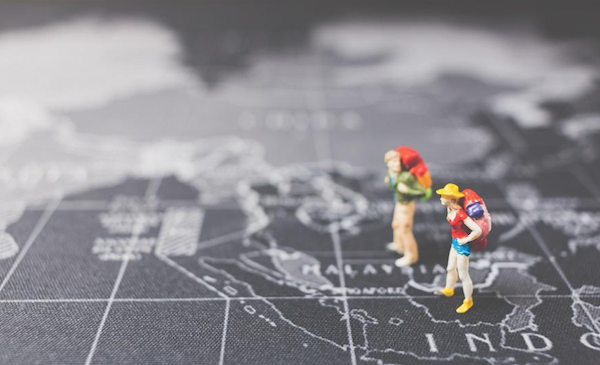
As travelers, we understand the importance of packing efficiently to ensure a smooth and enjoyable journey. While there are countless items that vie for space in our luggage, one accessory stands out for its versatility, convenience, and practicality: the neck gaiter.
In this article, we’ll explore why neck gaiters deserve a prime spot at the top of your travel packing list, covering everything from their multifunctional use to their lightweight design and durability.
The Versatility of Neck Gaiters
Protection from the elements.
Neck gaiters are a traveler’s best friend when it comes to facing unpredictable weather conditions. Whether you’re trekking through rugged terrain or strolling through city streets, a neck gaiter offers versatile protection against the sun’s rays, biting winds, swirling dust, and even chilly temperatures. 4inbandana offers a diverse selection of options to choose from. Explore their range of neck gaiters and find the perfect companion for your next adventure. Their seamless designs provide coverage for your neck, face, and head, ensuring you stay comfortable and protected in any environment.
Multifunctional Use
What sets neck gaiters apart from other travel accessories is their incredible versatility. Not only can they be worn as a neck warmer or face mask, but they also double up as a headband, beanie, scarf, or even a makeshift hair tie in a pinch. This multifunctional aspect eliminates the need to pack multiple items, saving precious space in your luggage and streamlining your travel gear. With a neck gaiter, you have a single accessory that adapts to a multitude of situations, making it an indispensable companion for any journey.
Lightweight and Compact Design
Space-saving advantage.
One of the most significant benefits of neck gaiters for travelers is their lightweight and compact design. Made from thin, breathable materials, they take up minimal space in your luggage, leaving more room for other essentials. Unlike bulky scarves or hats, neck gaiters can be rolled up or folded neatly to fit into the smallest compartments of your bag, making them an ideal choice for travelers who prioritize efficiency and organization.
Easy to Carry and Pack
Another advantage of neck gaiters is their portability. Whether you’re backpacking through Europe or embarking on a weekend getaway, you’ll appreciate the convenience of carrying a lightweight and packable accessory like a neck gaiter. Its small size allows you to slip it into your pocket or clip it onto your bag for easy access whenever you need it. Plus, since neck gaiters are wrinkle-resistant, you won’t have to worry about ironing or reshaping them after unpacking, saving you time and hassle on your travels.
Comfort and Breathability
Enhanced comfort.
Comfort is key when it comes to travel, and neck gaiters excel in this department. Made from soft, stretchy fabrics like microfiber or polyester, they provide a snug yet comfortable fit that stays in place throughout the day. Unlike traditional scarves or bandanas, which can be bulky and restrictive, neck gaiters offer a lightweight and seamless alternative that won’t weigh you down or cause discomfort, even during extended wear.
Breathable Fabric Technology
In addition to comfort, breathability is essential, especially in warm and humid climates. Neck gaiters are designed with moisture-wicking properties that help regulate your body temperature by wicking away sweat and moisture from your skin. This keeps you cool, dry, and comfortable, whether you’re hiking in the tropics or exploring a bustling city in the height of summer. Plus, since neck gaiters are quick-drying, you won’t have to wait long before they’re ready for your next adventure.
Durability and Longevity
High-quality construction.
When it comes to travel gear, durability is paramount. Neck gaiters are built to withstand the rigors of travel, thanks to their high-quality construction and resilient materials. Whether you’re hiking through rugged terrain or navigating crowded airports, a well-made neck gaiter will hold up to whatever adventures come your way, ensuring long-lasting performance trip after trip.
Easy Maintenance
Despite their rugged construction, neck gaiters are surprisingly easy to care for. Most can be machine washed and dried, making them a low-maintenance addition to your travel gear. To keep your neck gaiter in top condition, simply toss it in the laundry with your other travel clothes and let it air dry. With proper care, your neck gaiter will remain a reliable companion for countless journeys to come.
In conclusion, neck gaiters are a must-have accessory for travelers seeking comfort, versatility, and peace of mind on their journeys. From protecting you against the elements to streamlining your travel gear and keeping you comfortable in any environment, neck gaiters offer a myriad of benefits that make them worthy of a prime spot in your packing list. Whether you’re embarking on a weekend getaway or a globetrotting adventure, don’t leave home without a trusty neck gaiter by your side. With its lightweight design, multifunctional use, and durable construction, it’s sure to become your go-to travel companion for years to come.
Similar Stories
FEATURED STORIES
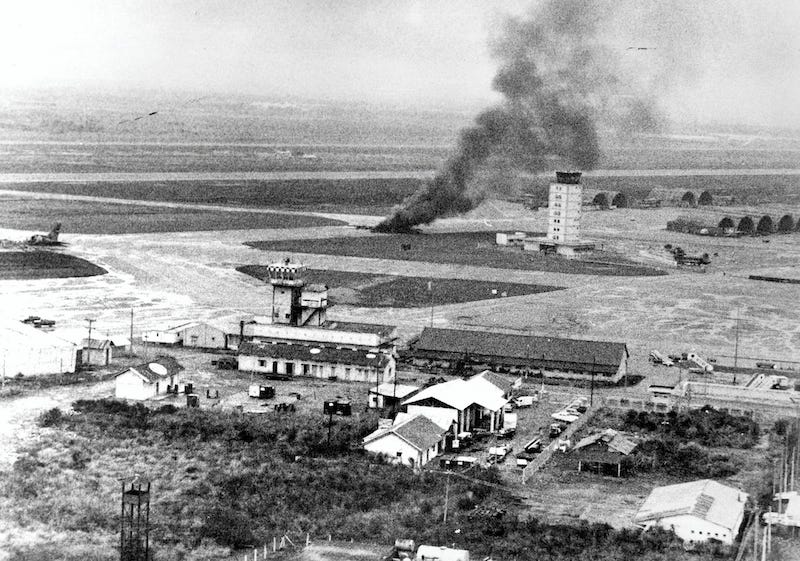
Click Here to Sign Up for Text Alerts
Or Signup Below For Email Alerts!

Suggested Searches
- Climate Change
- Expedition 64
- Mars perseverance
- SpaceX Crew-2
- International Space Station
- View All Topics A-Z
Humans in Space
Earth & climate, the solar system, the universe, aeronautics, learning resources, news & events.

NASA-Led Study Provides New Global Accounting of Earth’s Rivers

NASA’s Hubble Pauses Science Due to Gyro Issue

NASA’s Optical Comms Demo Transmits Data Over 140 Million Miles
- Search All NASA Missions
- A to Z List of Missions
- Upcoming Launches and Landings
- Spaceships and Rockets
- Communicating with Missions
- James Webb Space Telescope
- Hubble Space Telescope
- Why Go to Space
- Astronauts Home
- Commercial Space
Destinations
Living in Space
- Explore Earth Science
- Earth, Our Planet
- Earth Science in Action
- Earth Multimedia
- Earth Science Researchers
- Pluto & Dwarf Planets
- Asteroids, Comets & Meteors
- The Kuiper Belt
- The Oort Cloud
- Skywatching
- The Search for Life in the Universe
- Black Holes
- The Big Bang
- Dark Energy & Dark Matter
- Earth Science
- Planetary Science
- Astrophysics & Space Science
- The Sun & Heliophysics
- Biological & Physical Sciences
- Lunar Science
- Citizen Science
- Astromaterials
- Aeronautics Research
- Human Space Travel Research
- Science in the Air
- NASA Aircraft
- Flight Innovation
- Supersonic Flight
- Air Traffic Solutions
- Green Aviation Tech
- Drones & You
- Technology Transfer & Spinoffs
- Space Travel Technology
- Technology Living in Space
- Manufacturing and Materials
- Science Instruments
- For Kids and Students
- For Educators
- For Colleges and Universities
- For Professionals
- Science for Everyone
- Requests for Exhibits, Artifacts, or Speakers
- STEM Engagement at NASA
- NASA's Impacts
- Centers and Facilities
- Directorates
- Organizations
- People of NASA
- Internships
- Our History
- Doing Business with NASA
- Get Involved
- Aeronáutica
- Ciencias Terrestres
- Sistema Solar
- All NASA News
- Video Series on NASA+
- Newsletters
- Social Media
- Media Resources
- Upcoming Launches & Landings
- Virtual Events
- Sounds and Ringtones
- Interactives
- STEM Multimedia

Correction and Clarification of C.26 Rapid Mission Design Studies for Mars Sample Return

NASA’s Commercial Partners Deliver Cargo, Crew for Station Science

NASA Shares Lessons of Human Systems Integration with Industry

Work Underway on Large Cargo Landers for NASA’s Artemis Moon Missions

NASA’s ORCA, AirHARP Projects Paved Way for PACE to Reach Space

Amendment 11: Physical Oceanography not solicited in ROSES-2024

Why is Methane Seeping on Mars? NASA Scientists Have New Ideas

Mars Science Laboratory: Curiosity Rover

Hubble Spots a Magnificent Barred Galaxy

NASA’s Chandra Releases Doubleheader of Blockbuster Hits

Explore the Universe with the First E-Book from NASA’s Fermi

NASA Grant Brings Students at Underserved Institutions to the Stars

NASA Uses Small Engine to Enhance Sustainable Jet Research

NASA Photographer Honored for Thrilling Inverted In-Flight Image

NASA’s Ingenuity Mars Helicopter Team Says Goodbye … for Now

NASA Data Helps Beavers Build Back Streams

NASA’s Near Space Network Enables PACE Climate Mission to ‘Phone Home’

Washington State High Schooler Wins 2024 NASA Student Art Contest

NASA STEM Artemis Moon Trees

Kiyun Kim: From Intern to Accessibility Advocate

Diez maneras en que los estudiantes pueden prepararse para ser astronautas

Astronauta de la NASA Marcos Berríos

Learn More About Living in Space
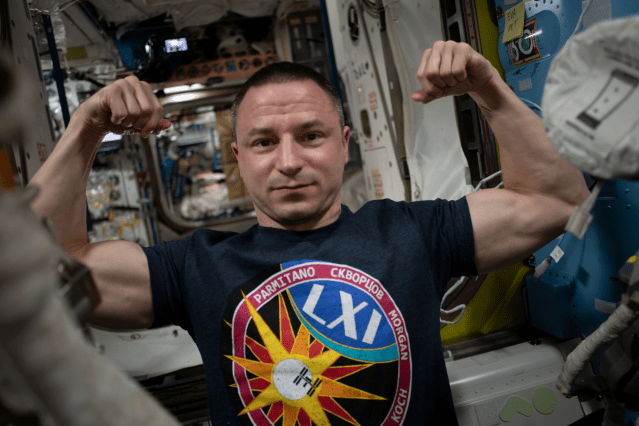
The Body in Space
Spaceflight affects bones, muscles, vision, and more. Learn about the changes humans may undergo during spaceflight, as well as the steps NASA takes to keep astronauts healthy and safe.
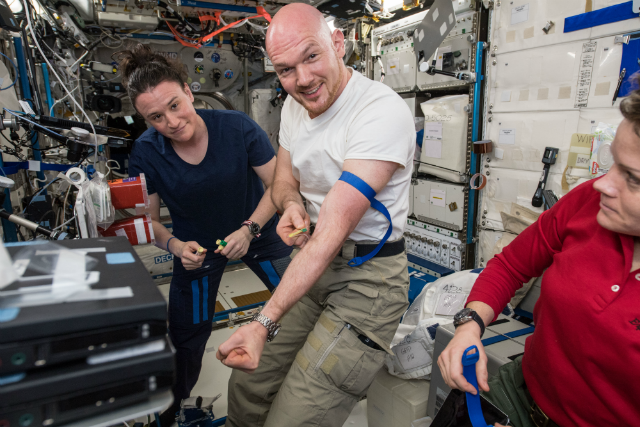
Research in Space
NASA seeks to understand how the human body changes while astronauts live and work on the space station. Learn how scientists work to maintain the health and well-being of crew members during and after their missions.
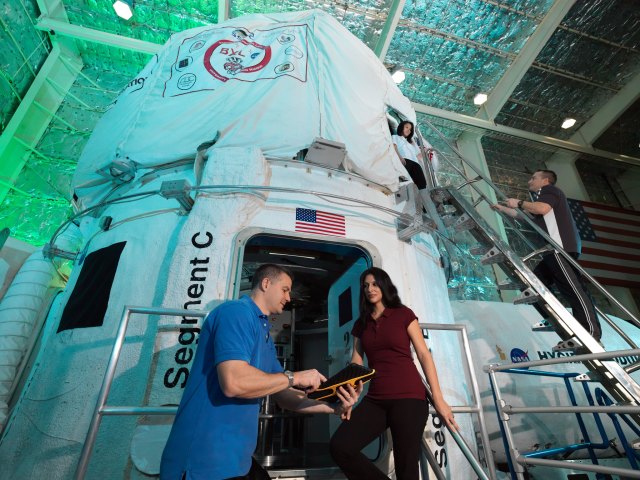
Research on Earth
NASA conducts Earth-bound simulations of life in space. Learn how scientists use such missions to study the way humans adapt to challenges astronauts may encounter on journeys to the Moon and Mars.
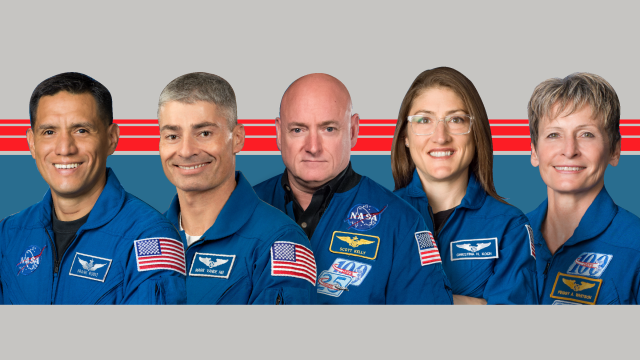
Extended Stays in Space
Frank Rubio, Mark Vande Hei, Scott Kelly, and others have spent an extended amount of time in space. Learn about the record-holders for the longest continuous spaceflights by U.S. astronauts.
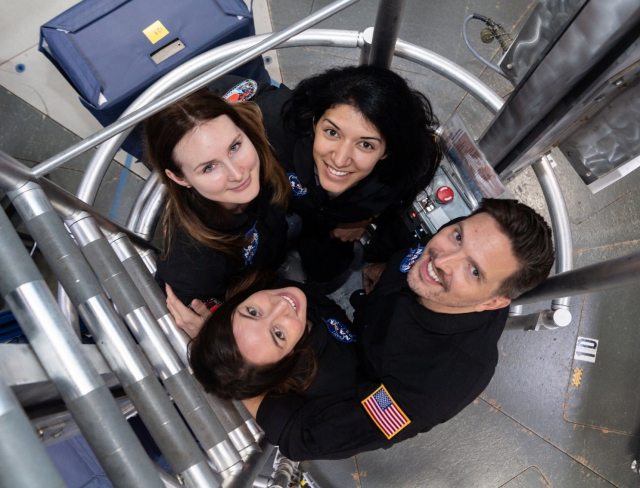
Collaborate With Us
Are you developing innovative ways to keep astronauts healthy and mission-ready ? Partner with NASA’s Human Research Program (HRP)! Check out information on NSPIRES and internships, and explore our how-to guides for working with us.
Staying Healthy in Space
Experiments to Unlock How Human Bodies React to Long Space Journeys
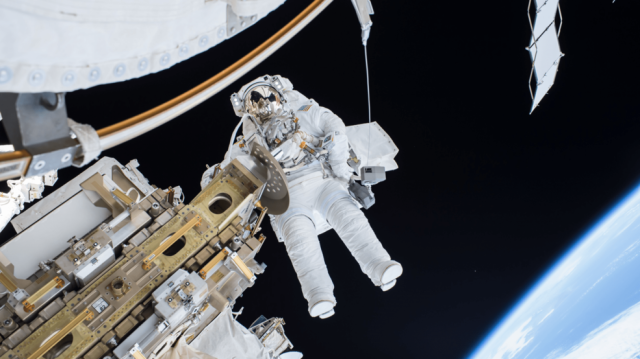
NASA Harnesses US Navy Spinning Device to Simulate Spaceflight

Isolation – What Can We Learn From the Experiences of NASA Astronauts?
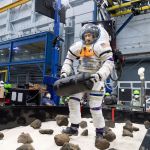
New Tests Evaluate Mission Readiness of Astronauts Upon Landing
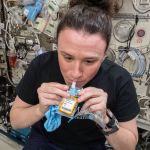
Scientists Probe How Long-Term Spaceflight Alters Immunity
Food in Space
Astronauts require food that is nutritious, appetizing, long-lasting, easy to make, and more. We strive to continuously improve the quality of space food and to satisfy the dietary needs of crew members on increasingly longer and more distant spaceflight missions.
The Menu for Mars: Designing a Deep Space Food System
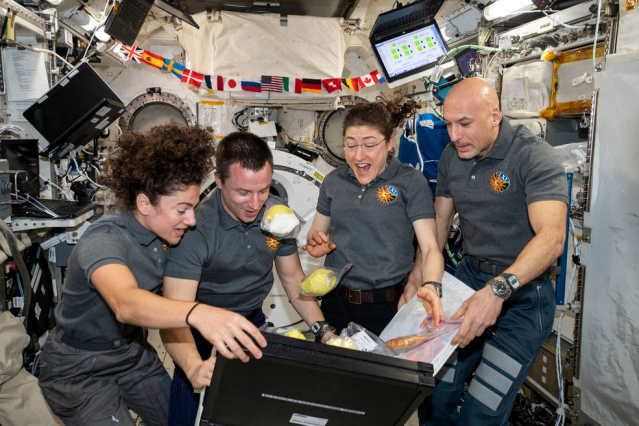
How Does Spaceflight Change Food Appeal?
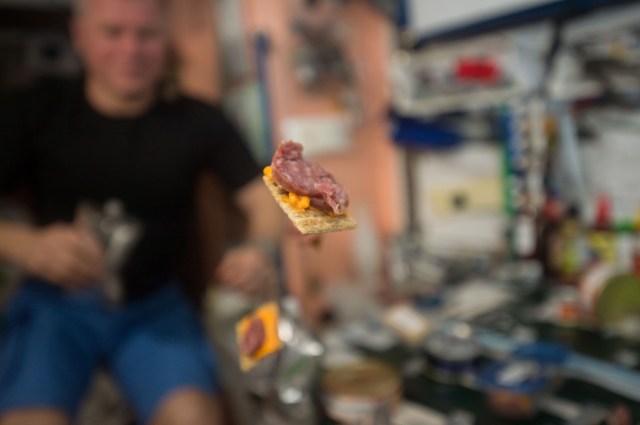
Enhanced Diet May Help Astronauts Adapt to Spaceflight
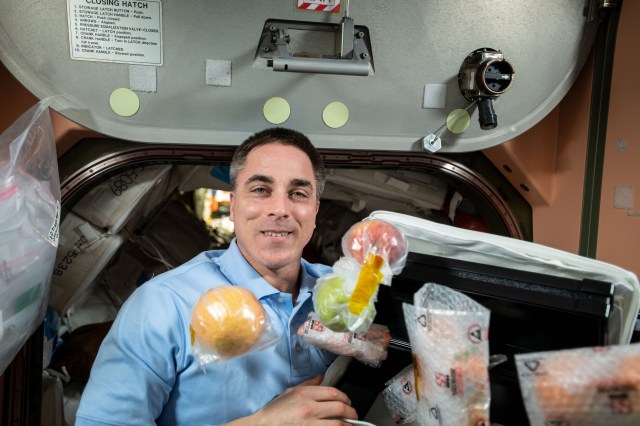
Steps to Mars
Explore the steps we are taking to prepare humans for long-duration spaceflight. We aim to combine insights from Earth-based simulations of life in space with research conducted on the space station and on future Artemis missions to get NASA ready to send crew to deep space.
NASA’s Human Research Program: Three Steps to Mars
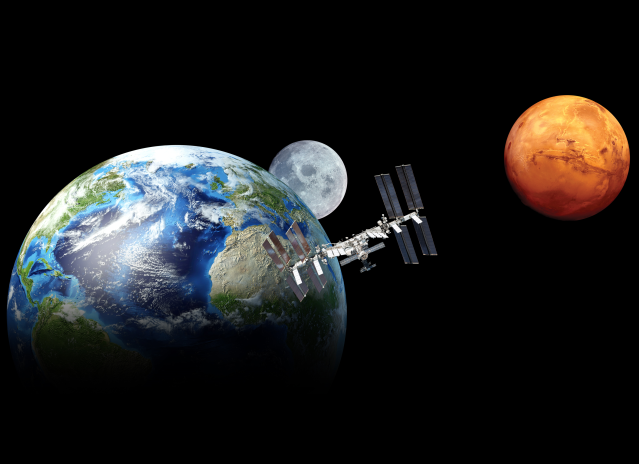
Step 1, Earth: Analogs Help Advance Missions to Moon, Mars
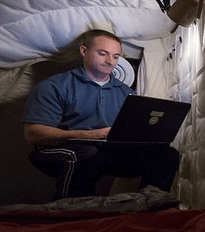
Step 2, Station: Space Laboratory as Testbed for Moon, Mars
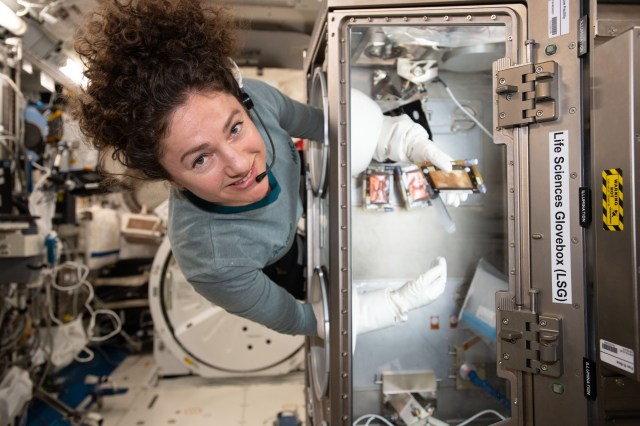
Step 3, Artemis: Moon Missions as an Astronaut Testbed for Mars
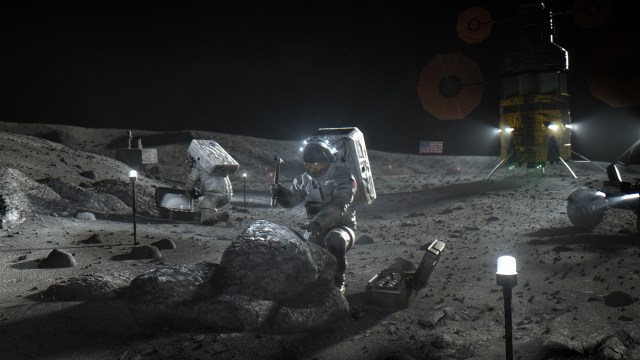
Space Gardening
Astronauts will need to grow — rather than solely bring — plants into space on trips to Mars and elsewhere. We test methods for nurturing crops in microgravity so that crew members can enjoy the fruits of gardening on deep space missions.
NASA: Let’s Ketchup on International Space Station Tomato Research
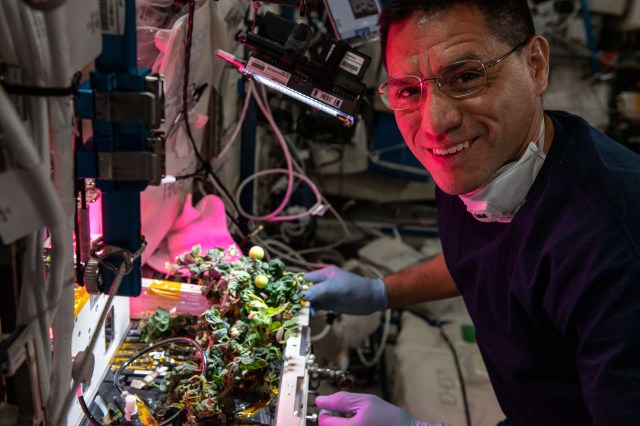
NASA Teams Persevere Through Plant Challenges in Space
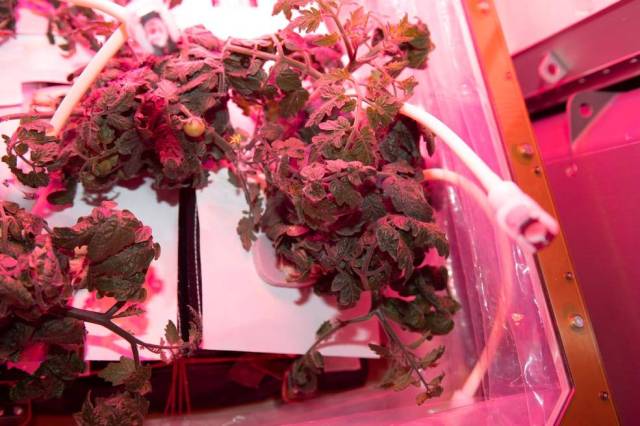
Mission Commander Thrives as ‘Space Gardener’
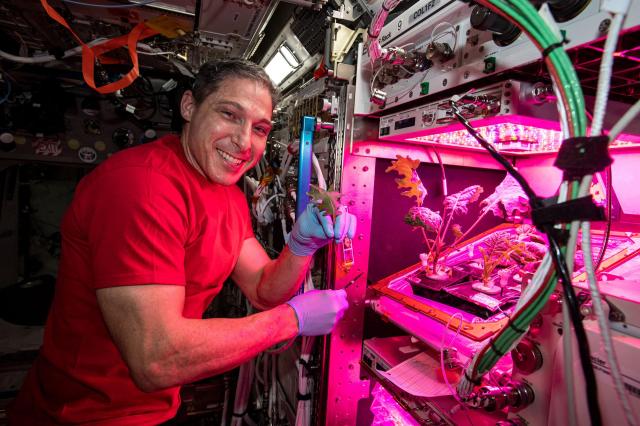
Can Space Gardening Help Astronauts Cope With Isolation?
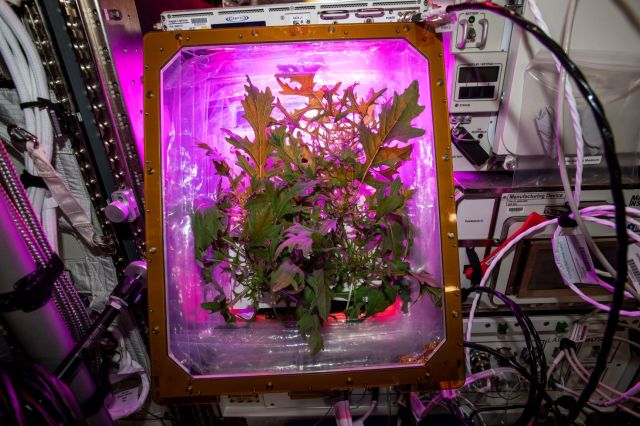
Hygiene in Space
Boldly Go! NASA’s New Space Toilet Offers More Comfort, Improved Efficiency for Deep Space Missions
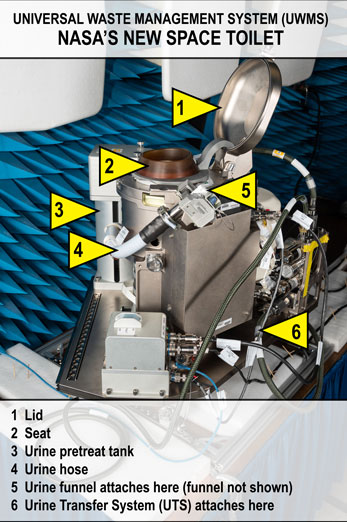
Morning Routine in Space
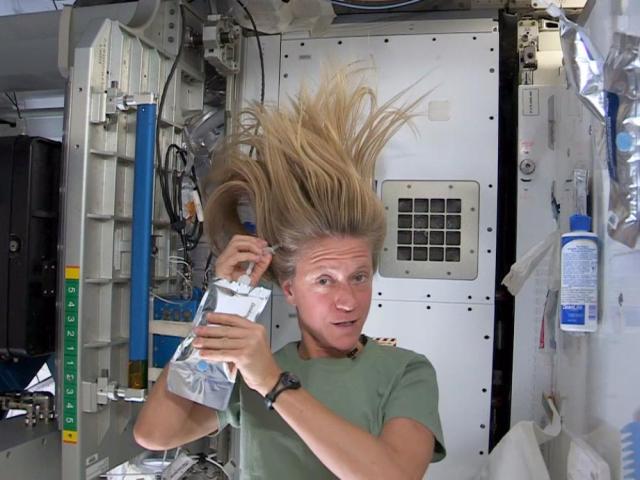
NASA Glenn Interns Take Space Washing Machine Designs for a Spin
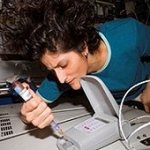
Does the Five-Second Rule Apply Aboard the Space Station?
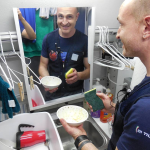
Dishes Don’t Wash Themselves: HERA Crew Member Keeps Habitat Clean
5 Hazards of Human Spaceflight
Astronauts encounter five hazards as they journey through space. Recognizing these hazards allows NASA to seek ways that overcome the challenges of sending humans to the space station, the Moon, Mars, and beyond.
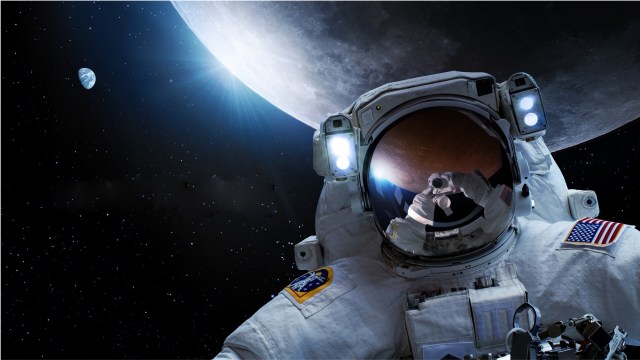
What will life be like on missions to deep space?
Take a peek into the lives of crew on a simulated mission to Mars. Confined inside NASA's Human Exploration Research Analog (HERA), these crew answer questions from students around the world. They share how they maintain their privacy, build strong group dynamics, cope with missing their families, adapt to unexpected circumstances, and more.
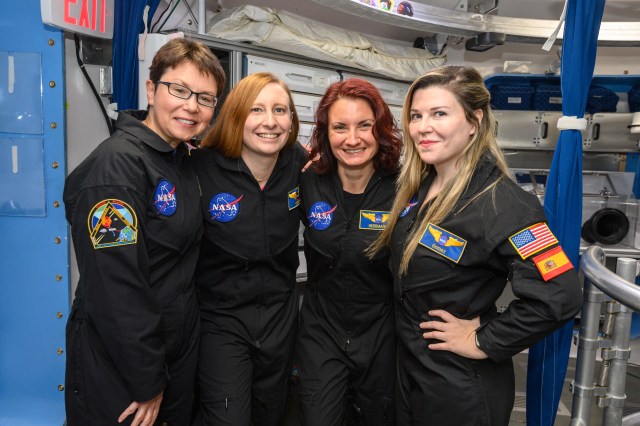
Discover More Topics From NASA
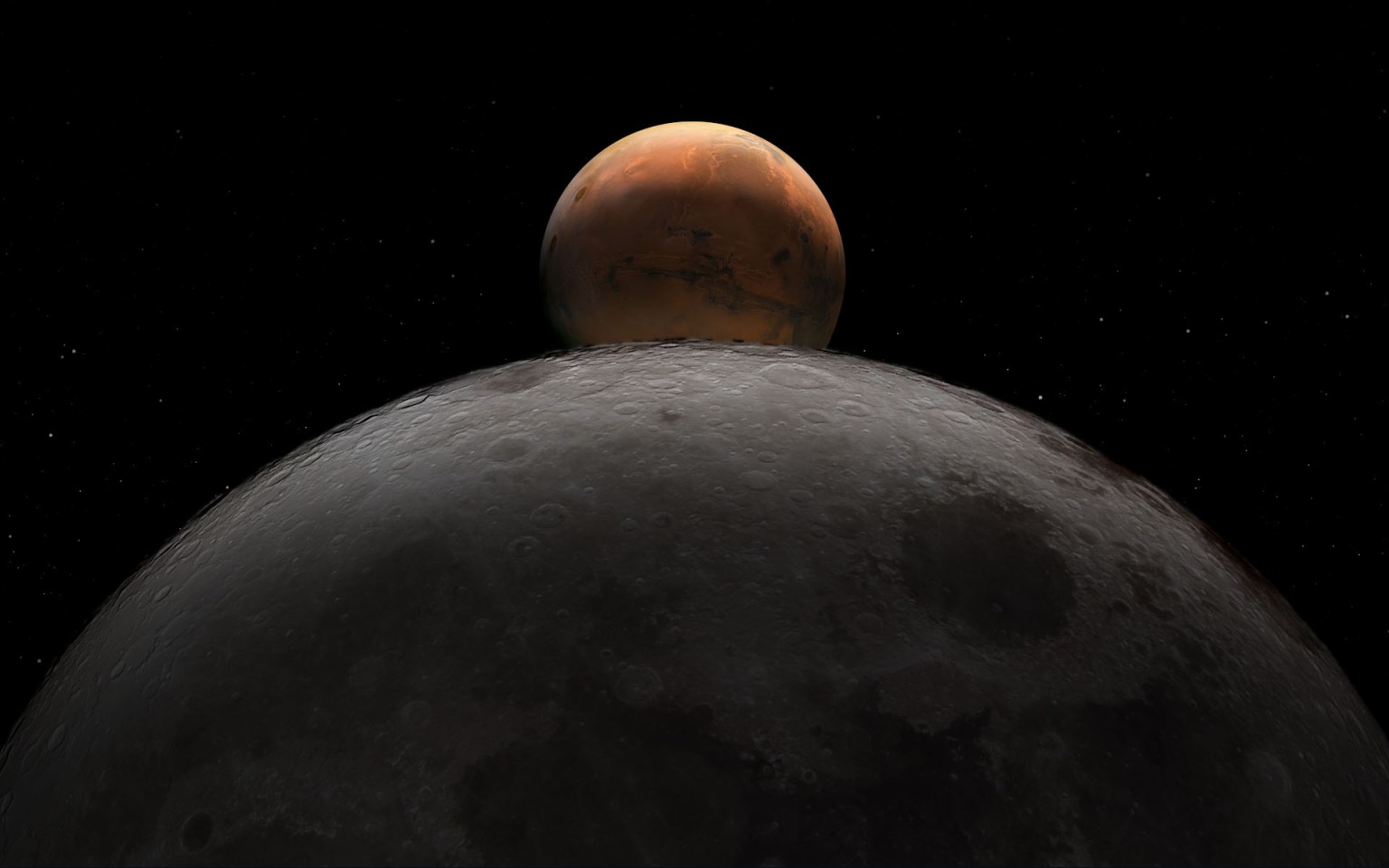
Human Research Program

Space Station Research and Technology


COMMENTS
Countries (and successor states) whose citizens have flown in space as of January 2024. The criteria for determining who has achieved human spaceflight vary. The Fédération Aéronautique Internationale (FAI) defines spaceflight as any flight over 100 kilometres (62 mi), while in the United States, professional, military and commercial astronauts who travel above an altitude of 50 miles (80 ...
She'll be only the fourth Black woman from the US to travel to orbit. Chris Sembroski, a 42-year-old Seattle-based Lockheed Martin employee and former camp counselor at Alabama's famed Space Camp.
The Fédération Aéronautique Internationale (FAI) defines spaceflight as any flight over 100 kilometres in altitude - the two grey-shaded regions.. This is a list of space travellers by first flight.The table is listed in chronological order from the date of first flight. The table adheres to a common definition of a space traveller; the Fédération Aéronautique Internationale criterion ...
Space Station Expedition 70. The Expedition 70 crew began on Sept. 27, 2023. The astronauts and cosmonauts will be studying an array of microgravity phenomena to benefit humans living on and off the Earth. The orbital residents will also explore heart health, cancer treatments, space manufacturing techniques, and more during their long-duration ...
Space exploration unites the world to inspire the next generation, make ground-breaking discoveries, and create new opportunities. Technologies and missions we develop for human spaceflight have thousands of applications on Earth, boosting the economy, creating new career paths, and advancing everyday technologies all around us.
NASA aims to travel to the moon again—and beyond. Here's a look at the 21st-century race to send humans into space. Private spaceflight is not a new concept. In the United States, commercial ...
Everything you need to know about space travel (almost) - BBC Science Focus Magazine.
But since the early 2000s, when seven intrepid travelers paid millions to spend a few days aboard the International Space Station (ISS), space tourism has begun to take off.
Jason Lyon. By Debra Kamin. May 7, 2022. Ilida Alvarez has dreamed of traveling to space since she was a child. But Ms. Alvarez, a legal-mediation firm owner, is afraid of flying, and she isn't ...
In typical Elon Musk fashion, SpaceX plans on sending travelers into actual outer space for a multi-day journey. Travelers might be able to stay aboard the spacecraft while orbiting around Earth.
Up to 2009, only 7 people made it into space as tourists, all travelling with the Russian Space Agency, and all paying in excess of USD $20 million. These weren't exactly hop-on hop-off trips either, with the participants undergoing months of training, and many of them actively running their own experiments in space.
Voyager 1 is the first spacecraft to travel beyond the solar system and reach interstellar space . The probe launched on Sept. 5, 1977 — about two weeks after its twin Voyager 2 — and as of ...
Fer Gregory/Shutterstock.com. As of 2021, Americans James Lovell, Fred Haise, John Swigert are the three people who have traveled furthest from Earth, during the Apollo 13 mission. When they flew ...
The probe and its twin, Voyager 2, are the only spacecraft to ever fly in interstellar space (the space between stars). Voyager 1 stopped sending readable science and engineering data back to Earth on Nov. 14, 2023, even though mission controllers could tell the spacecraft was still receiving their commands and otherwise operating normally.
Space Travel. The path to the Moon, Mars, and beyond requires technologies to get us where we need to go quickly, safely and efficiently. Space travel includes launch and in-space propulsion systems, cryogenic fluid management, and thermal management, as well as navigation and landing systems to get our supplies, equipment, and robotic or human ...
For 20 years, the astronauts aboard the International Space Station have conducted science in a way that cannot be done anywhere else. Orbiting about 250 miles above our planet, the space station is the only laboratory available for long-duration microgravity research. During the past two decades, the space station has supported numerous ...
No word on how much it cost them. For $55 million, Axiom Space will send astronauts via a SpaceX rocket to the International Space Station, a laboratory that circles Earth once every 90 minutes ...
Yes, time travel is indeed a real thing. But it's not quite what you've probably seen in the movies. Under certain conditions, it is possible to experience time passing at a different rate than 1 second per second. And there are important reasons why we need to understand this real-world form of time travel.
The Crossword Solver found 30 answers to "Traveller in space (5)", 5 letters crossword clue. The Crossword Solver finds answers to classic crosswords and cryptic crossword puzzles. Enter the length or pattern for better results. Click the answer to find similar crossword clues . Enter a Crossword Clue. A clue is required.
An observer traveling at high velocity will experience time at a slower rate than an observer who isn't speeding through space. While we don't accelerate humans to near-light-speed, we do send ...
As space agencies and commercial entities push further into the final frontier, RocketStar's FireStar Drive promises to be a key component in overcoming the challenges of deep space travel.
In Traveller In Space, June Campbell delivers us beyond superficial cynicism into a scholarly study of the unusual patriarchal system of Tibetan Tantra and its relevance to female subjectivity. Although Campbell speaks from extensive personal experience--she was a consort of an important Tibetan lama (priest-monk) for several years and an ...
On Saturday, April 5, Voyager 1 finally "phoned home" and updated its NASA operating team about its health. The interstellar explorer is back in touch after five months of sending back nonsense data.
Our space telescopes might detect a mixture of gases in its atmosphere that resembles our own. Computer models would offer predictions about the planet's life-bearing potential. Experts would debate whether the evidence made a strong case for the presence of life, or try to find still more evidence to support such a groundbreaking interpretation.
India is one of the world's top spacefaring nations. It is the first Asian country to reach Mars orbit, and the fourth on the planet to take a spacecraft to the moon, landing closer to the south ...
While Starfield, as with many Bethesda games, offered plenty of side activities and quests for players to partake in outside of the main campaign, Shattered Space would benefit from being a more pared-down affair.Setting its story between a smaller number of hand-crafted locations rather than adding more procedurally generated ones would reduce how much fast travel is required and would keep ...
As travelers, we understand the importance of packing efficiently to ensure a smooth and enjoyable journey. While there are countless items that vie for space in our luggage, one accessory stands ...
Travel to the Moon, Mars, and beyond will require new systems to provide medical care far from Earth. Learn more about the changes humans may undergo during spaceflight, as well as the steps NASA takes to keep astronauts healthy and safe. NASA astronaut and Flight Engineer Andrew Morgan flexes his muscles in an airlock of the space station.
Titanic: A Space Between is a time-travel horror adventure where players get sent back to the RMS Titanic. With a focus on realism and immersion, this multi-layered horror experience mixes puzzles and escape mechanics without compromise.
From the challenges of providing optimal nutrition to managing the risks posed by microgravity, scientists and engineers from NASA work to predict, assess, and solve the problems that humans encounter in space. Through such research, NASA can develop systems that help humans thrive in space. Learn more about living in space.